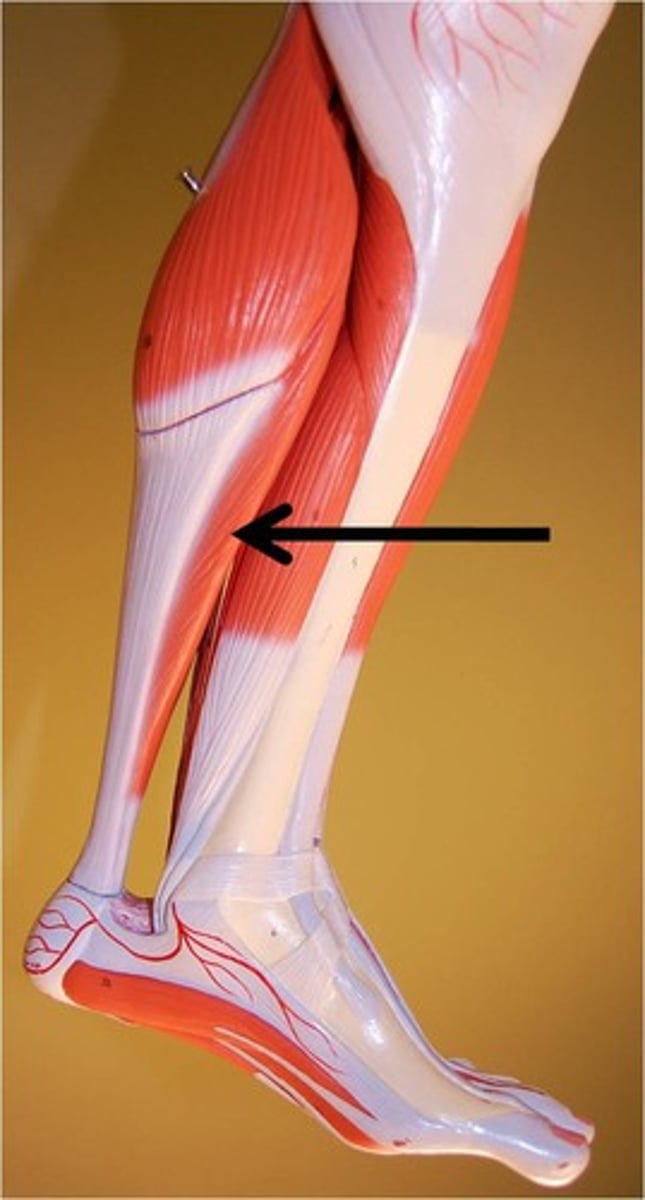BIO 201 MUSCLE SYSTEM LAB GUIDE
1/54
There's no tags or description
Looks like no tags are added yet.
Name | Mastery | Learn | Test | Matching | Spaced |
|---|
No study sessions yet.
55 Terms
Abbreviation key
L= Location
A= Action
O= Origin
I= Insertion
Occipitalis
L: Covers occipital bone
A: Retracts scalp/pulls backward
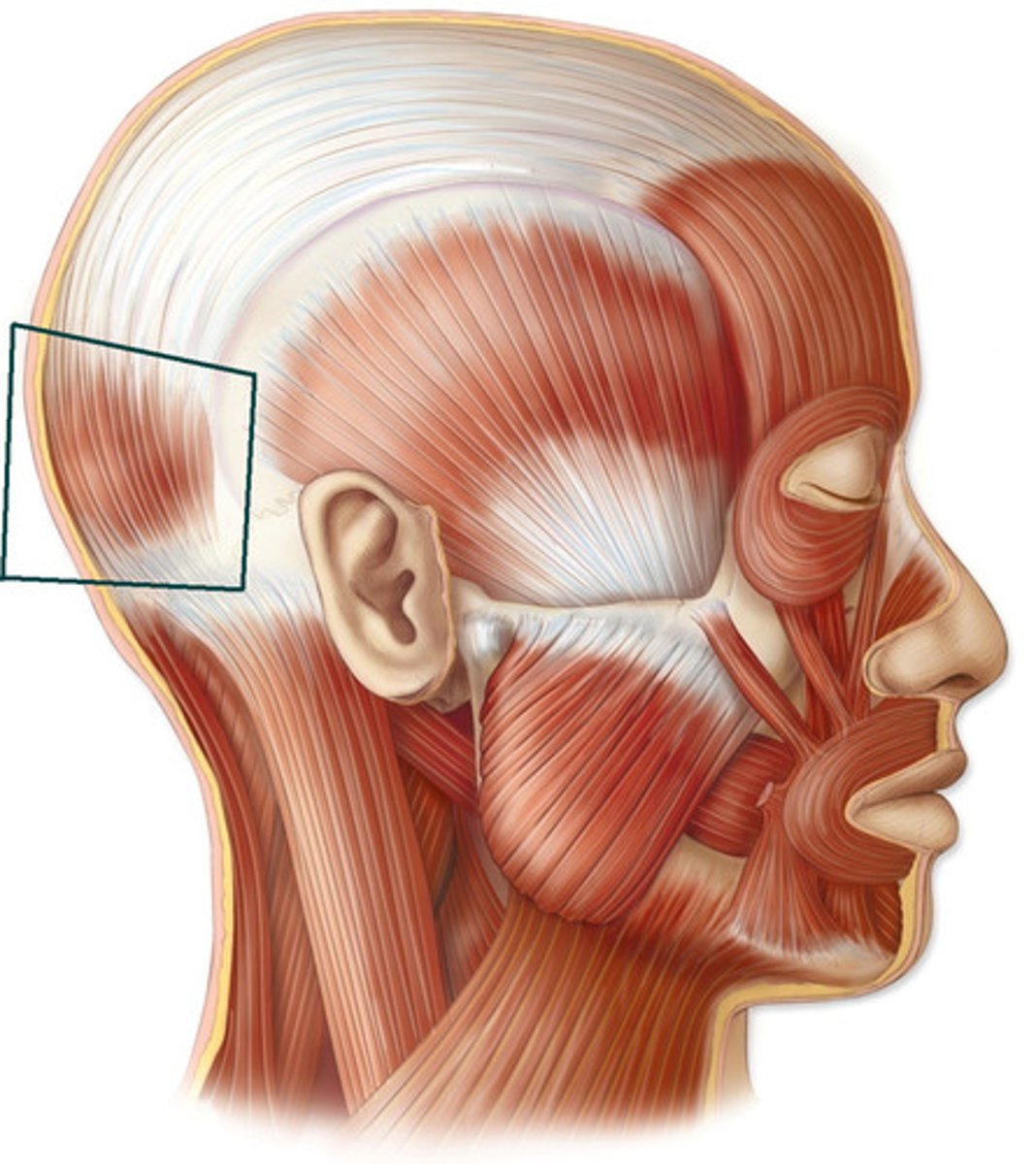
Frontalis
L: Covers frontal bone
A: Elelevates eyebrows/wrinkles forehead
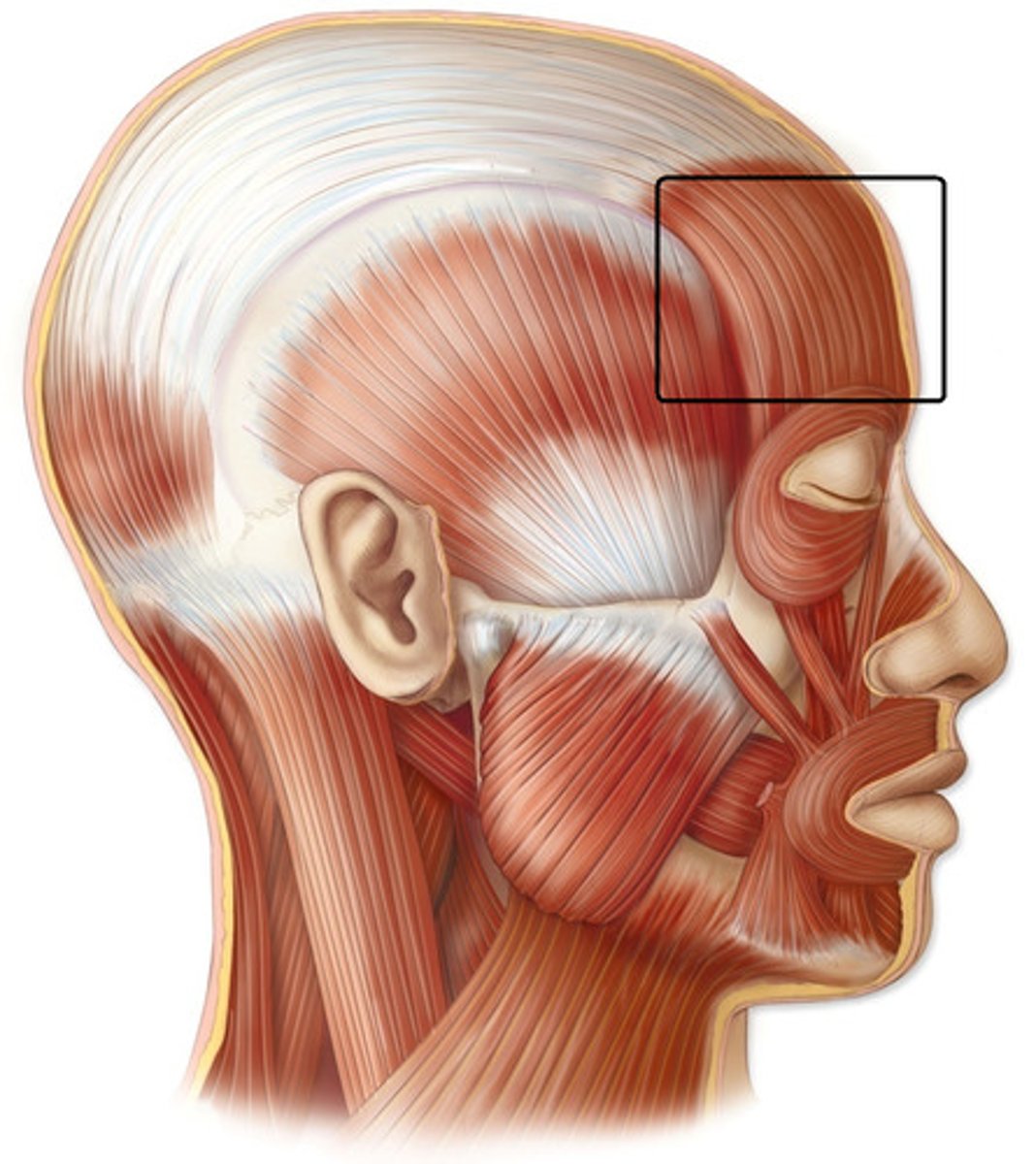
Temporalis
L: Covers squamous portion of temporal bone & attached to mandible.
A: Elevates and retracts mandible, agonist (prime mover) of mandible elevation.
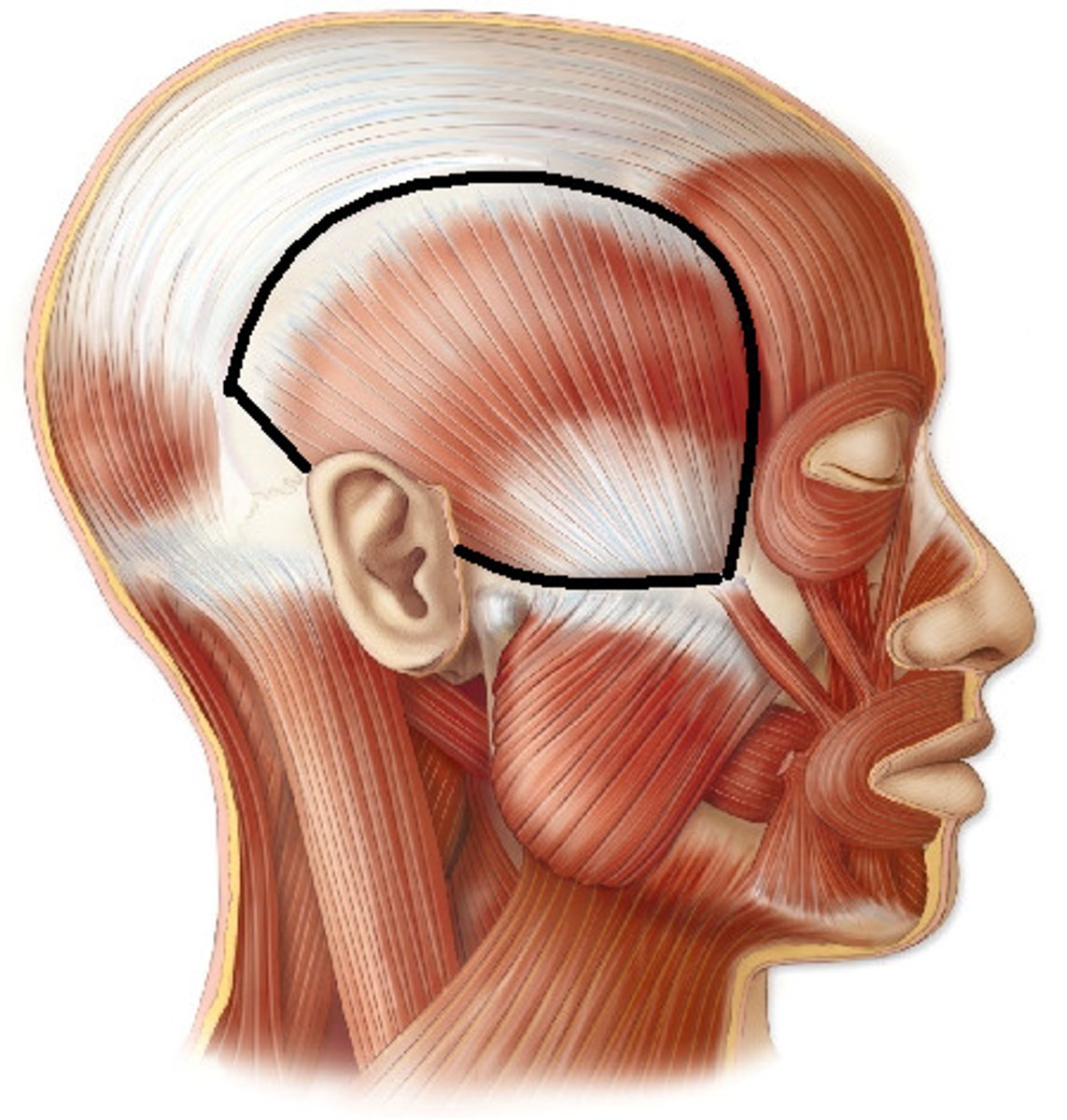
Masseter
L: Covers ramus of mandible.
A: Elevates mandible, clenches teeth (aids chewing).
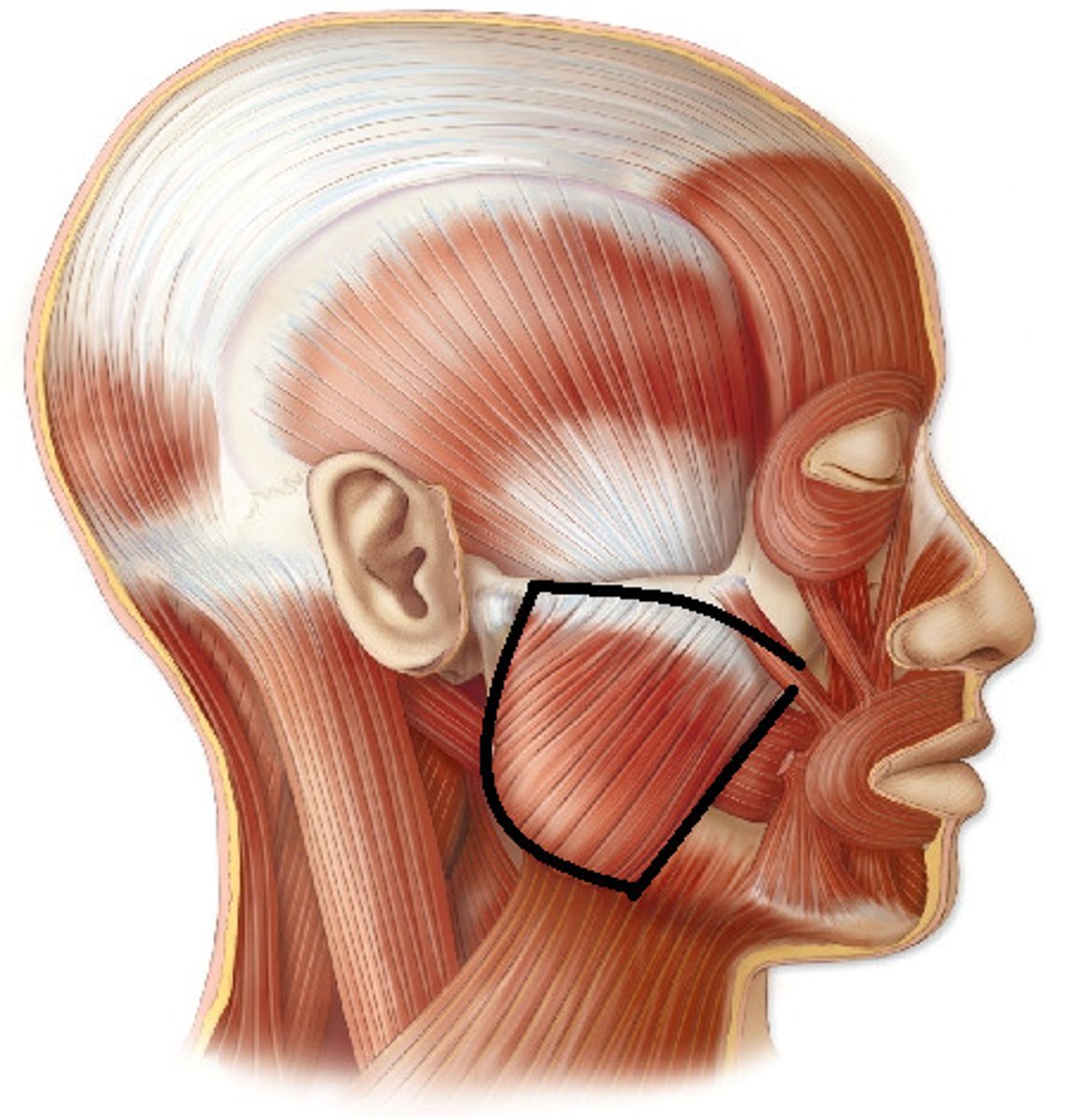
Zygomaticus
L: Zygomatic bone to corners of mouth
A: Lifts corner of mouth in a smile
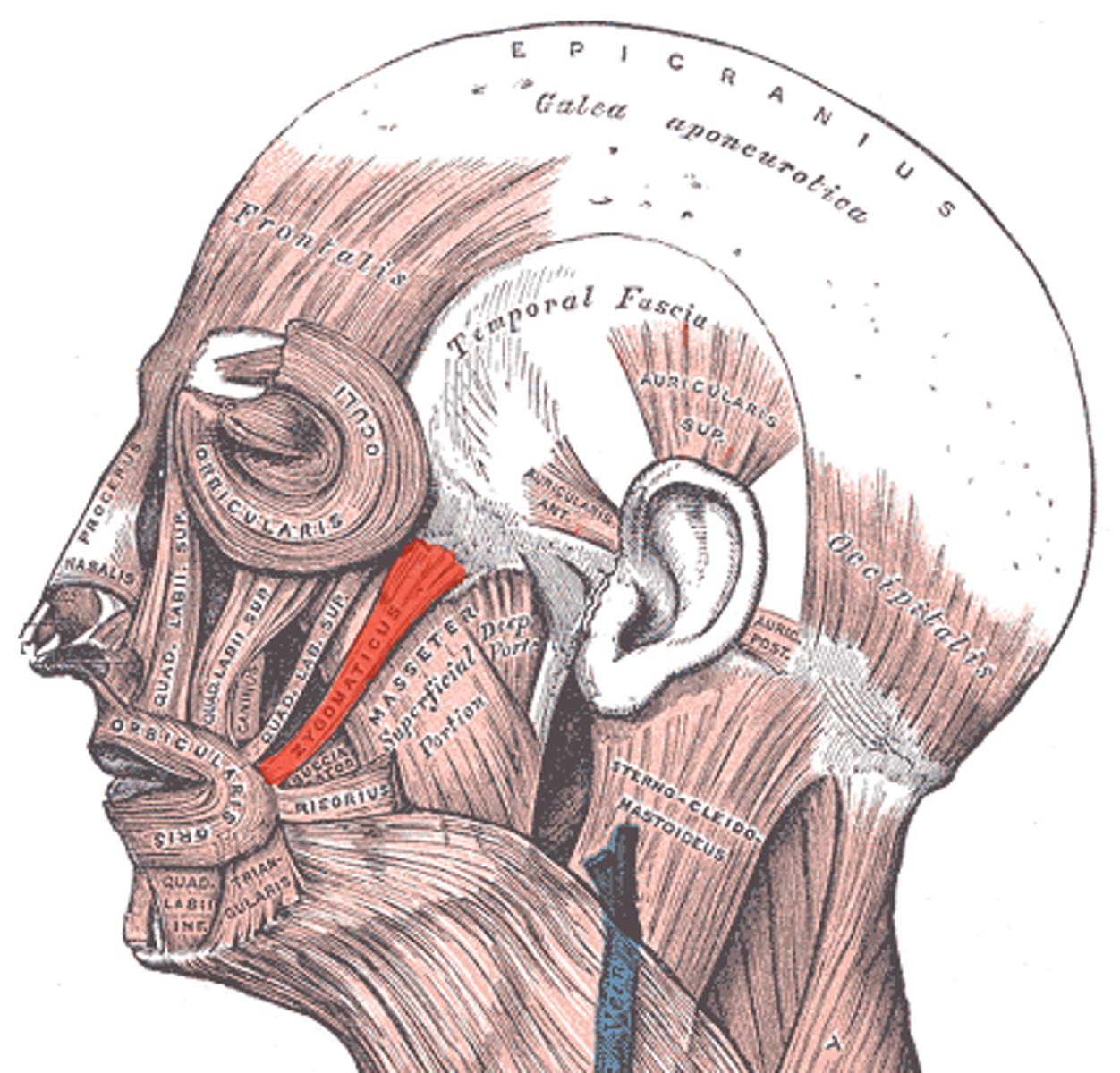
Buccinator
L: Fleshy part of the cheek - between mandible & maxillae
A: Compresses cheek; holds food between teeth during chewing, contracted when blowing (i.e., balloon, trumpet)
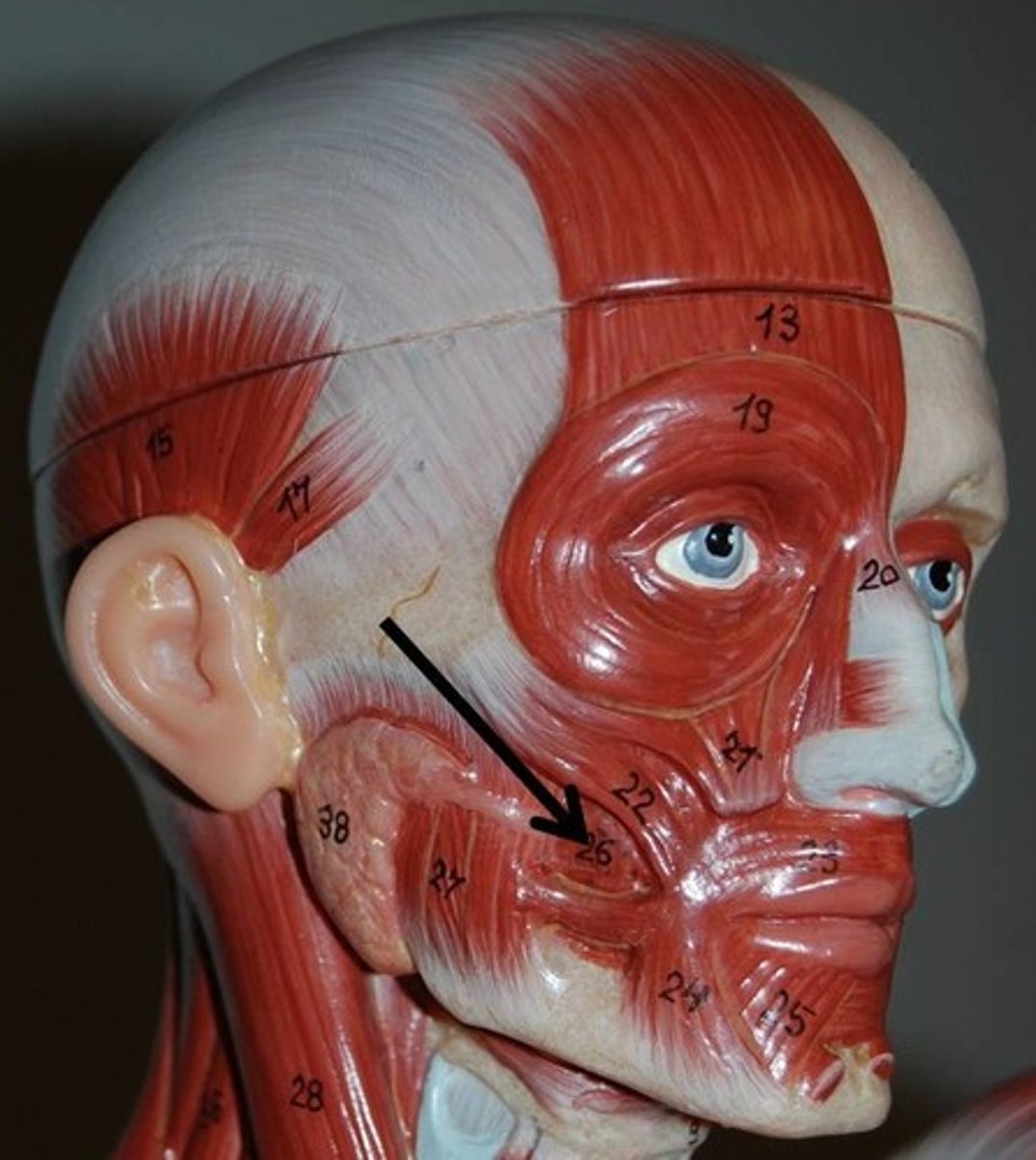
Orbicularis oculi
L: Around eye.
A: Winking, blinking, closing eyelid.
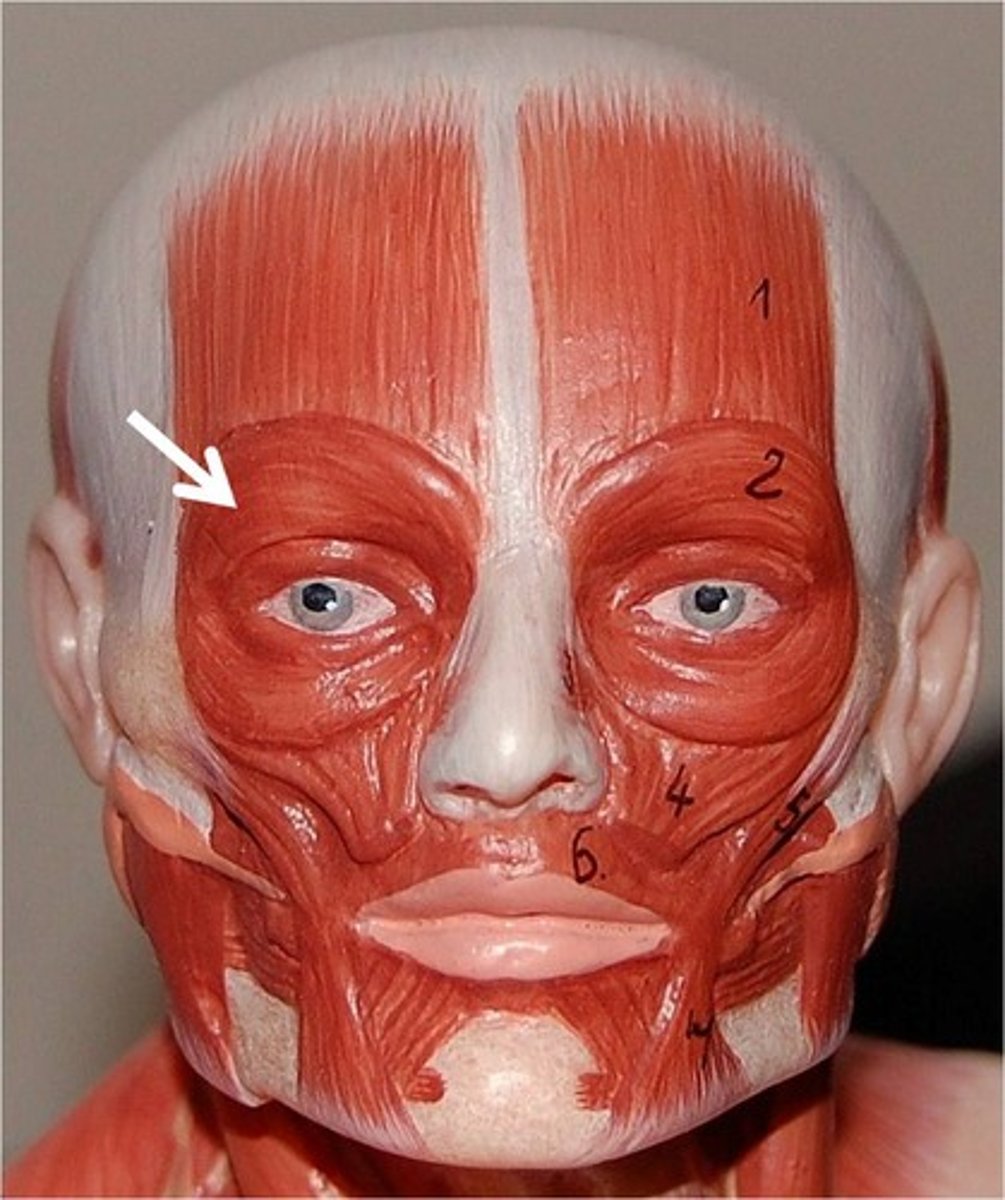
Orbicularis oris
L: Around mouth
A: Puckering
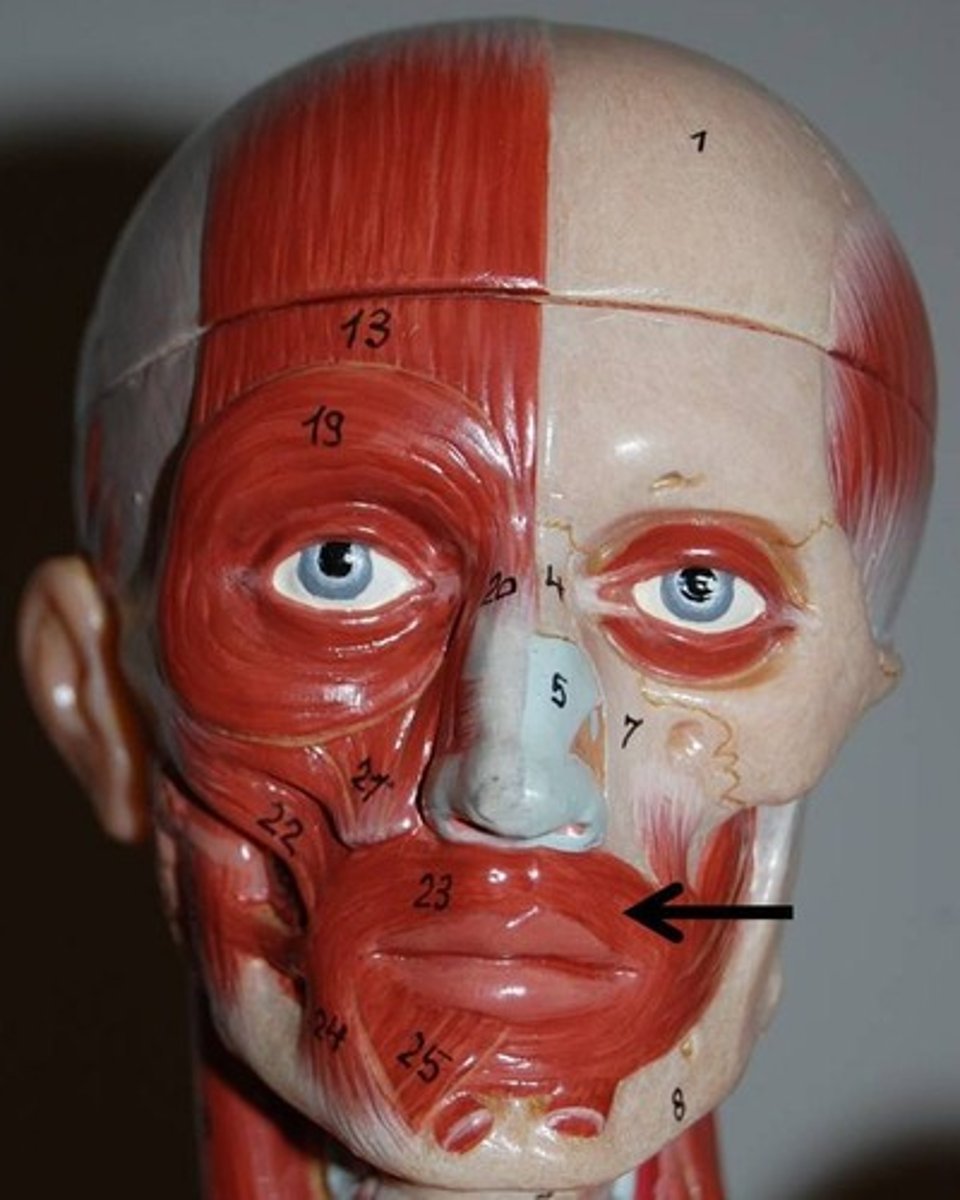
Nasalis
L: Sides of nose
A: Twitch nose, flaring nostrils
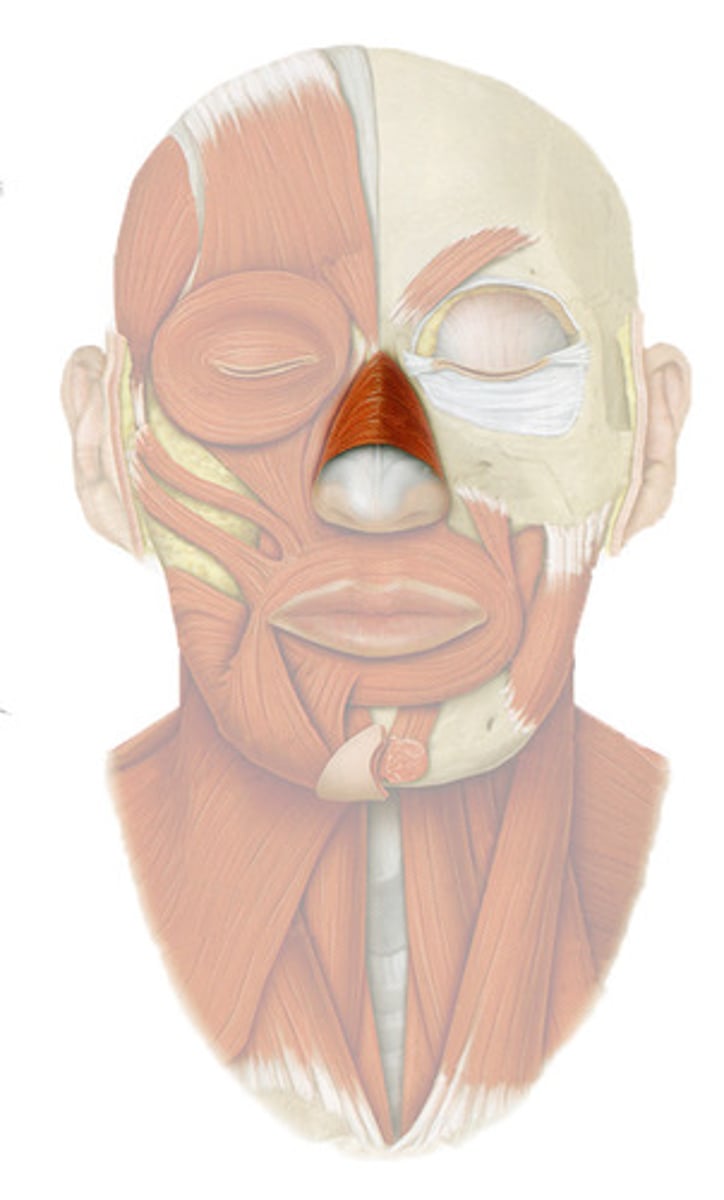
Sternocleidomastoid
L: Sides of neck extending to chest
A: Bilateral action: flexes neck. Unilateral action: lateral flexion of neck and rotation of head to opposite side. Elevates sternum upon forceful inhale.
O: Two heads, one on sternum (sterno-), one on clavicle (cleido-).
I: Mastoid process of the temporal bone
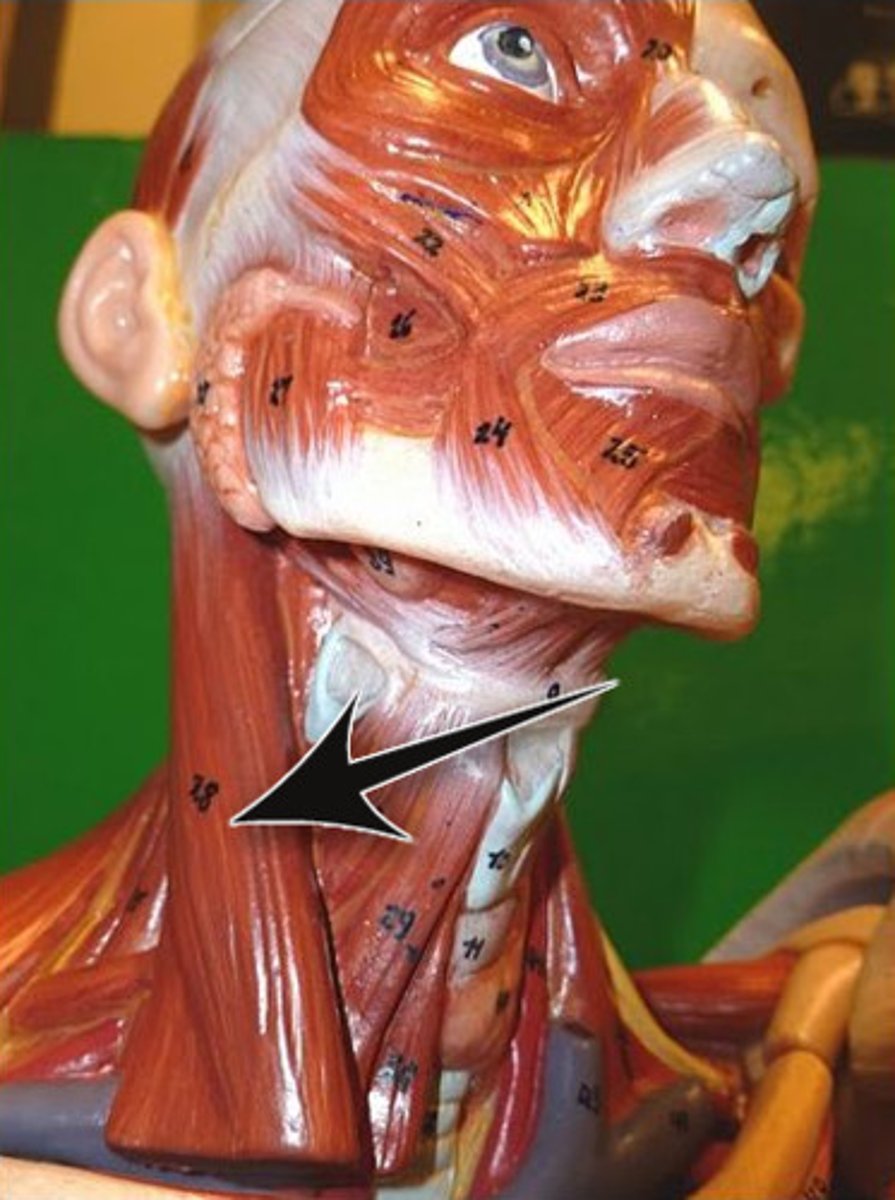
Platysma
L: Superficial neck muscle
A: Pulls outer edges of lower lip down; tense skin of neck
O: Fascia of deltoid and pectoralis major muscles, and acromion of scapula.
I: Skin of cheek and mandible
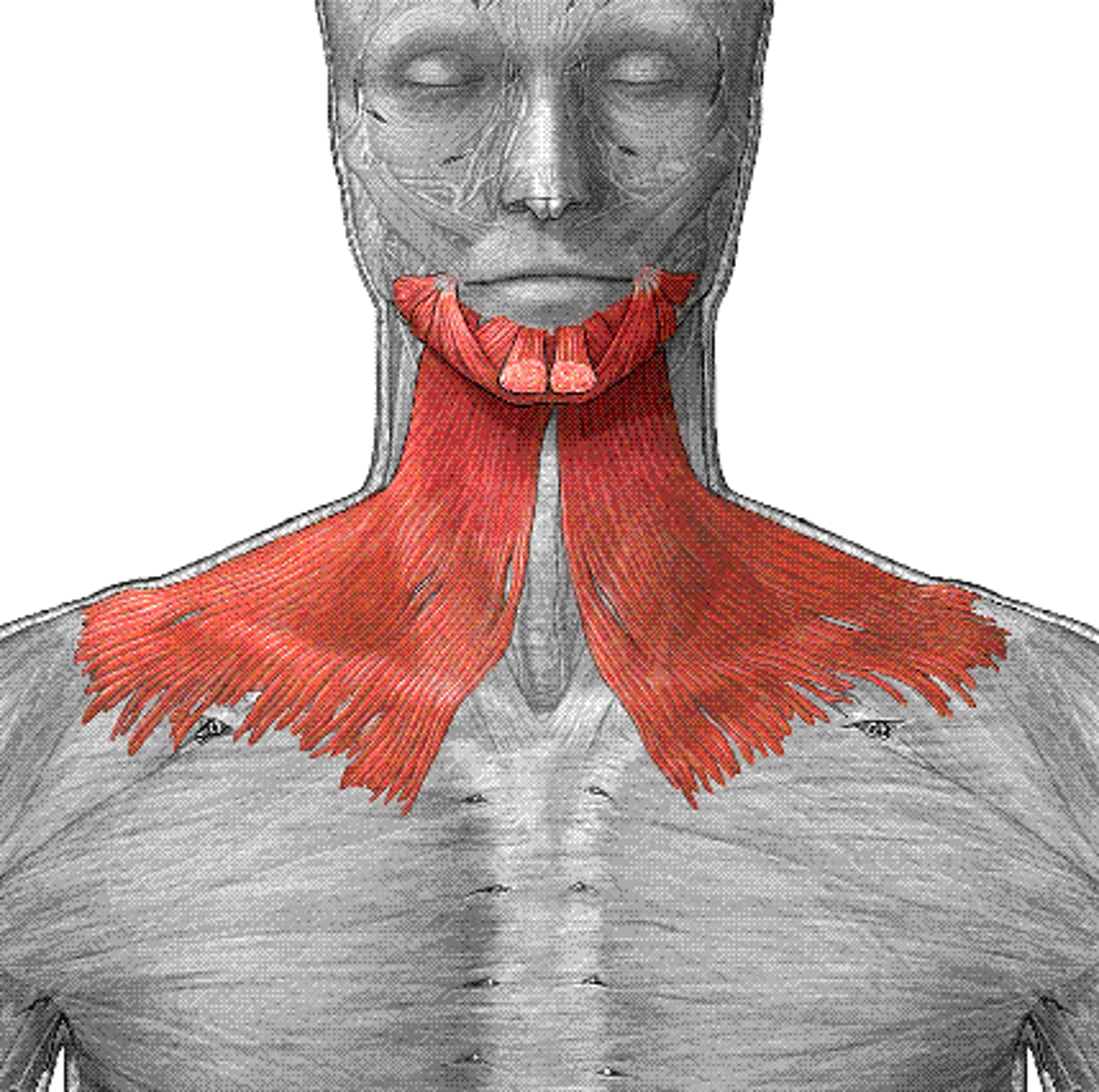
Trapezius
L: Upper back & neck (2 peices, together = diamond-shaped)
A: Elevates, retracts, and depresses scapula; also, rotates scapula superiorly; adducts scapulae together; shrugs shoulders
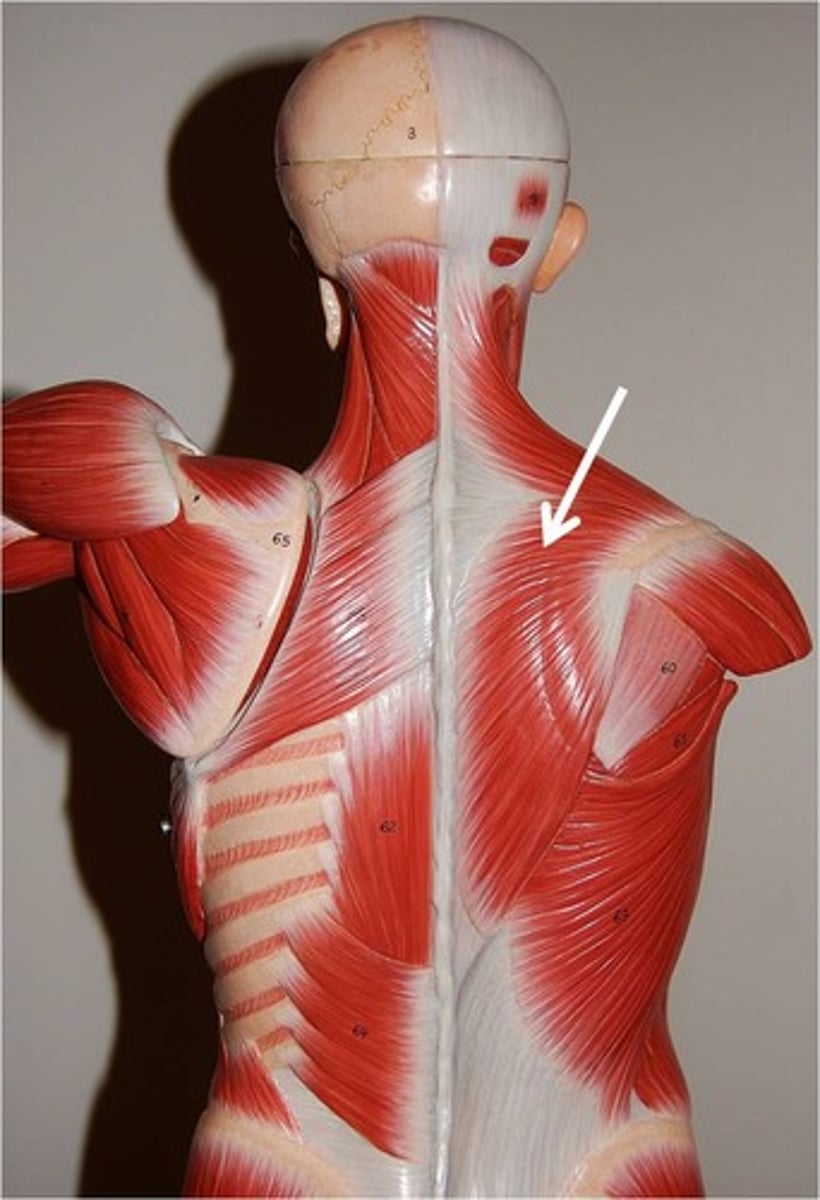
Latissimus dorsi
L: Lower back to humerus, forms posterior armpit
A: Extends, adducts, and medially rotates arms, i.e. as in the downward stroke of the butterfly when swimming. Antagonistic to pectoralis major (arm extension); synergistic to pectoralis major (adduction and medial rotation of humerus).

Pectoralis major
L: Upper chest, sternum to humerus, forms anterior armpit
A: Flexes arm (agonist), adducts and medially totates arm, Antagonistic to latissimus dorsi.
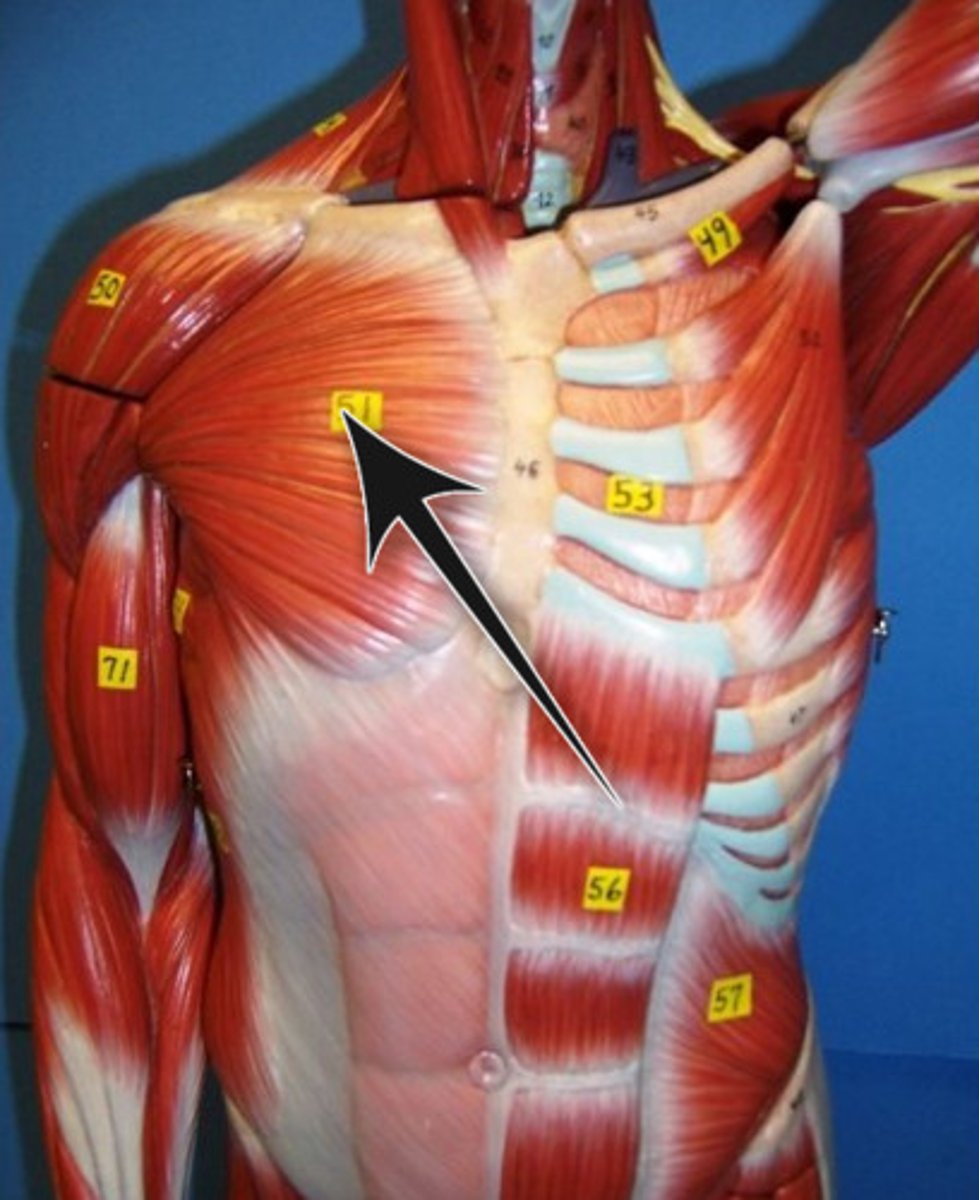
Pectoralis minor
L: Deep muscle under pectoralis major (ribs to coracoid process of scapula).
A: Abducts and depresses scapula (hunched shoulders), can aid in inhalation.

Intercostals
L: Between ribs (external & internal layers on opposite bias).
A: External intercostals aid in quiet and forced inspiration. Internal intercostals depress ribs in forced expiration.
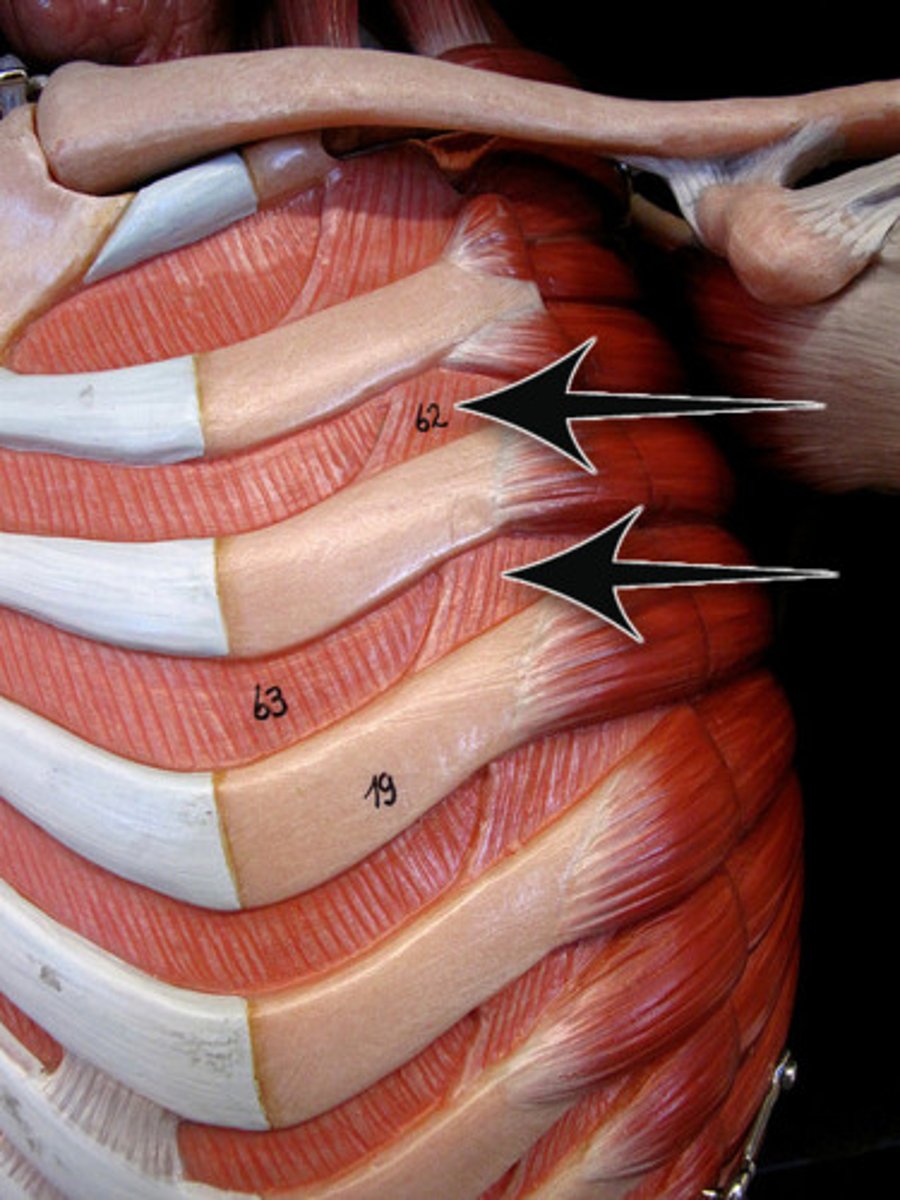
Serratus anterior
L: Under arms and below pectoralis minor (from ribs to scapula)
A: Abducts scapulae and pulls them forward. Antagonisitc to trapezius.
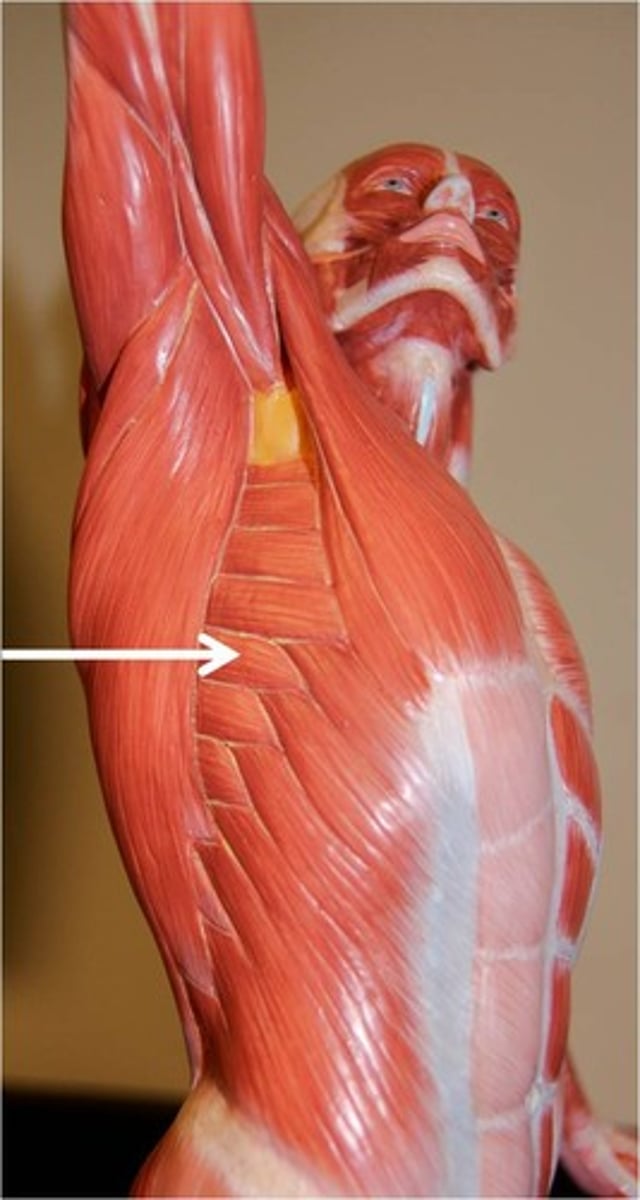
Rectus abdominis
L: "6 pack" in front of abdomen (2 longitudinal strips, from ribs &sternum to pubis bones).
A: Flexes trunk, sit ups ,crunch compresses abdominal wall.
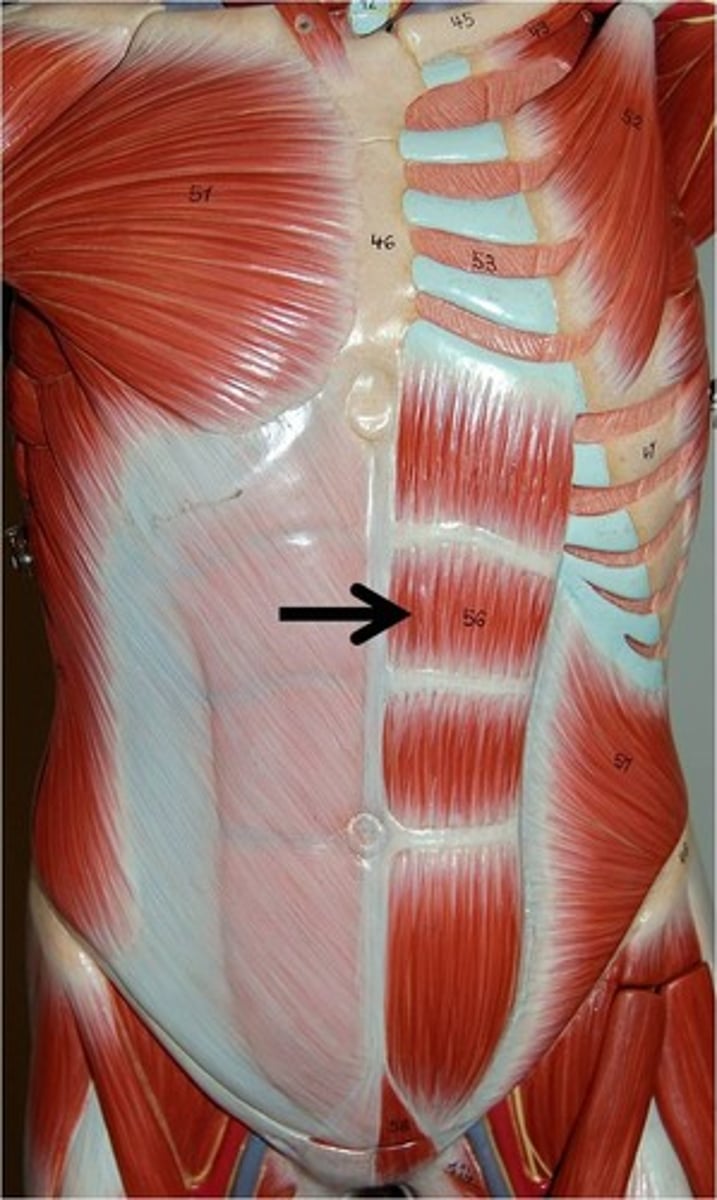
External oblique
L: Superficial muscle along lateral abdominal wall.
A: Flexion, twisting, turning of the trunk, compression of abdomen
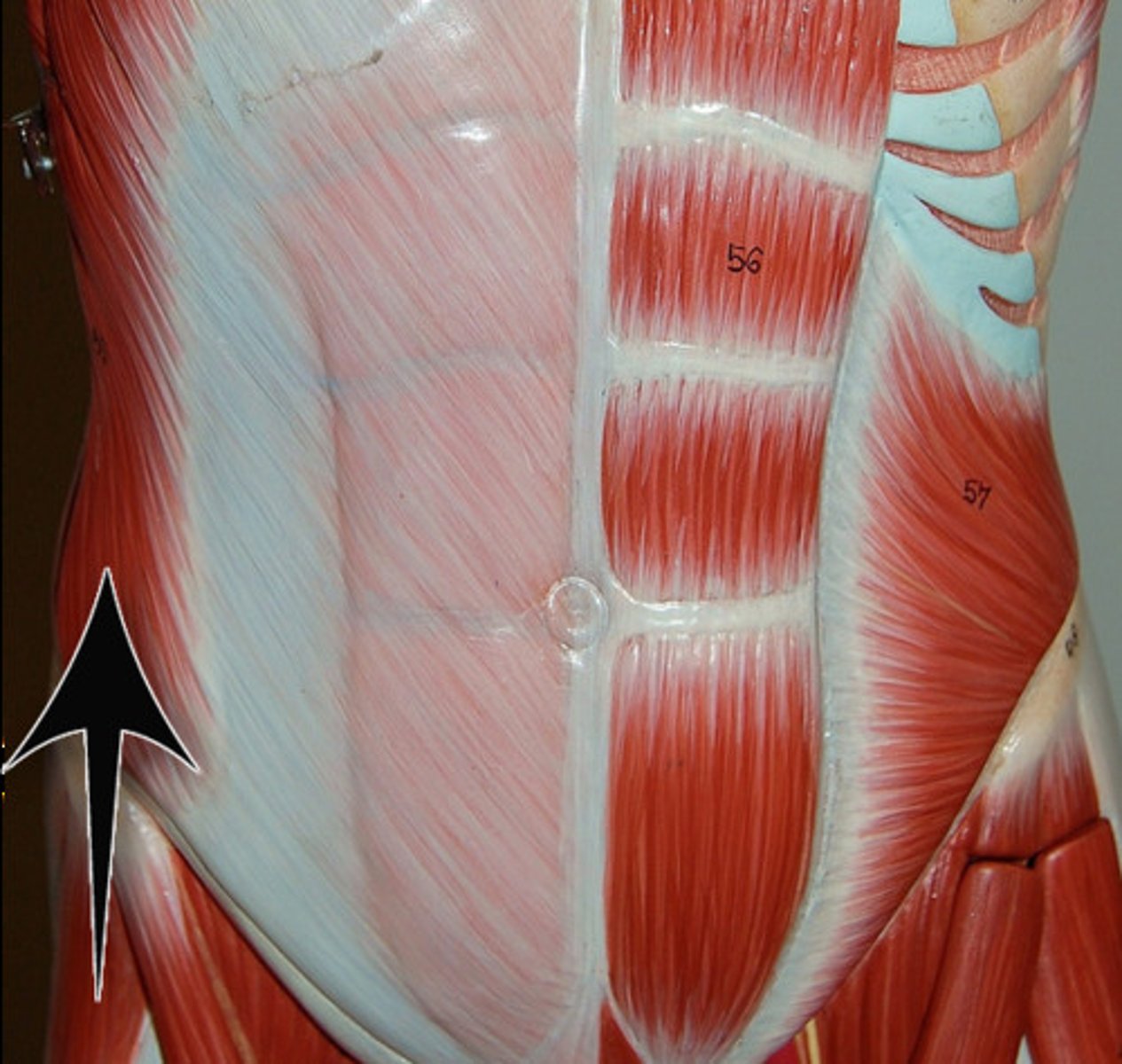
Internal oblique
L: Deep to external oblique and superior to transversalis
A: Compression of abdomen
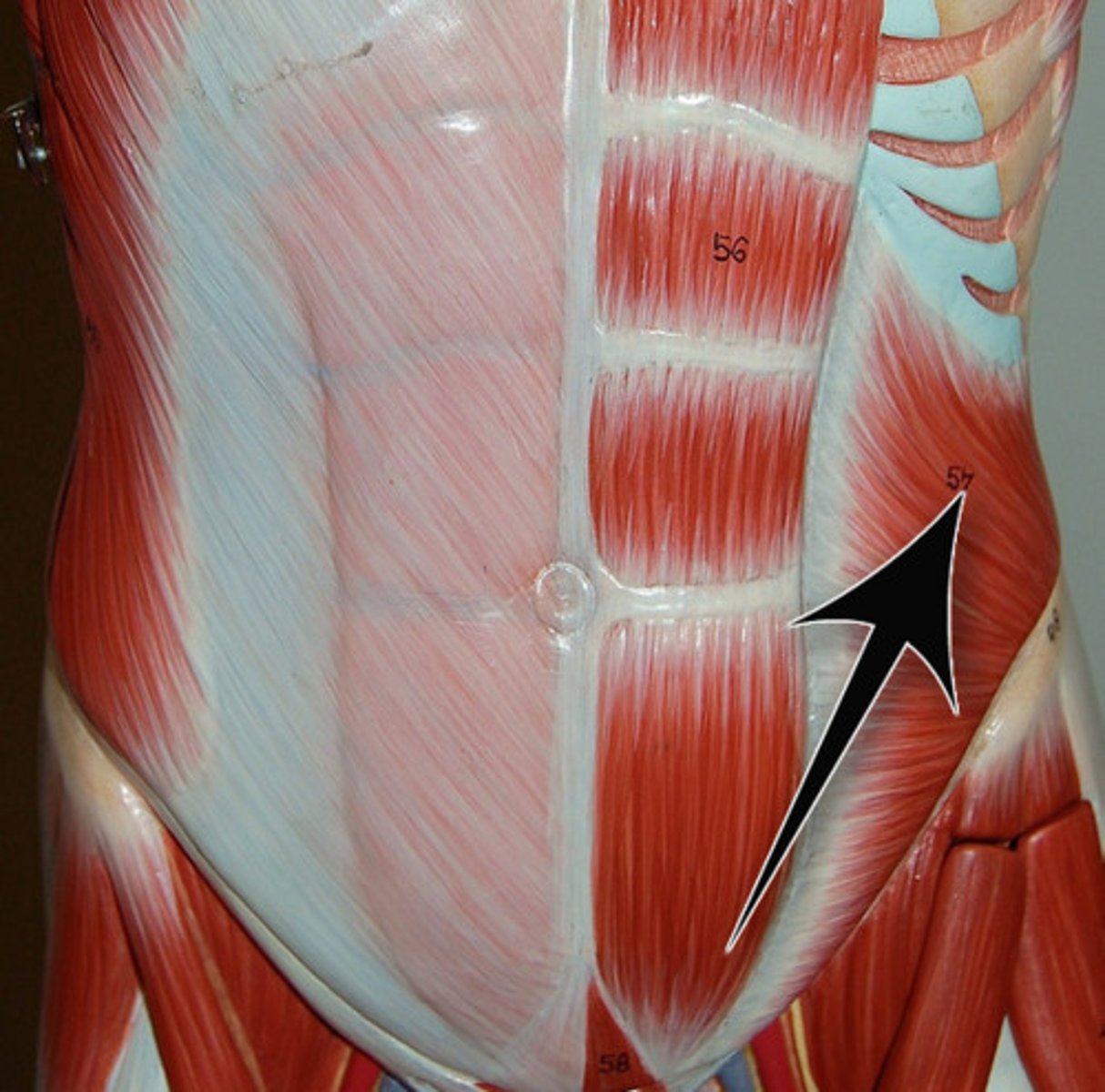
Transversalis
L: Inner wall
A: flexion, twisting, turning of the trunk, compression of abdomen.
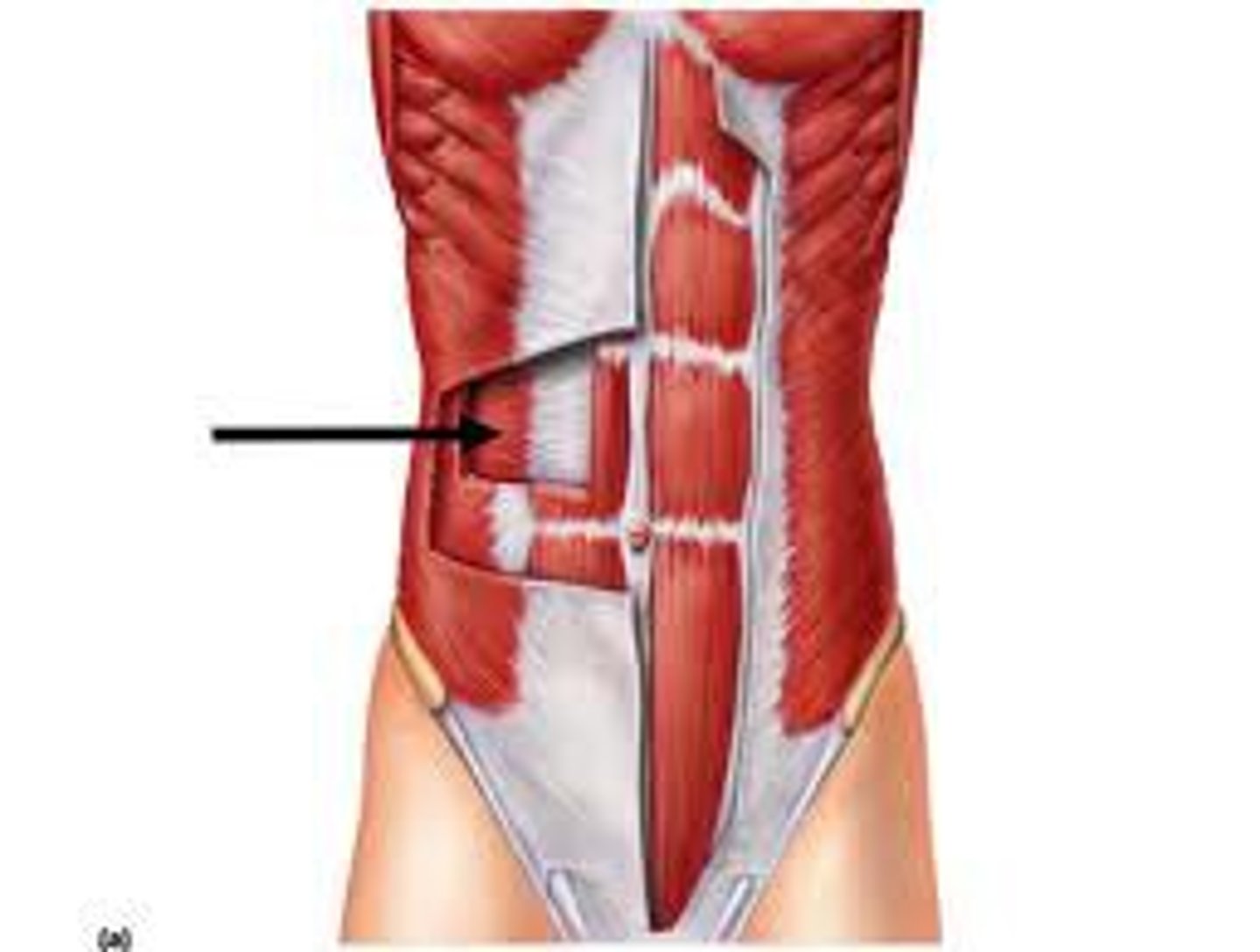
Levator ani
L: Floor of pelvic cavity; group of muscles forming anterior and lateral pelvic diaphragm.
A: Support pelvic organs, elevates anus
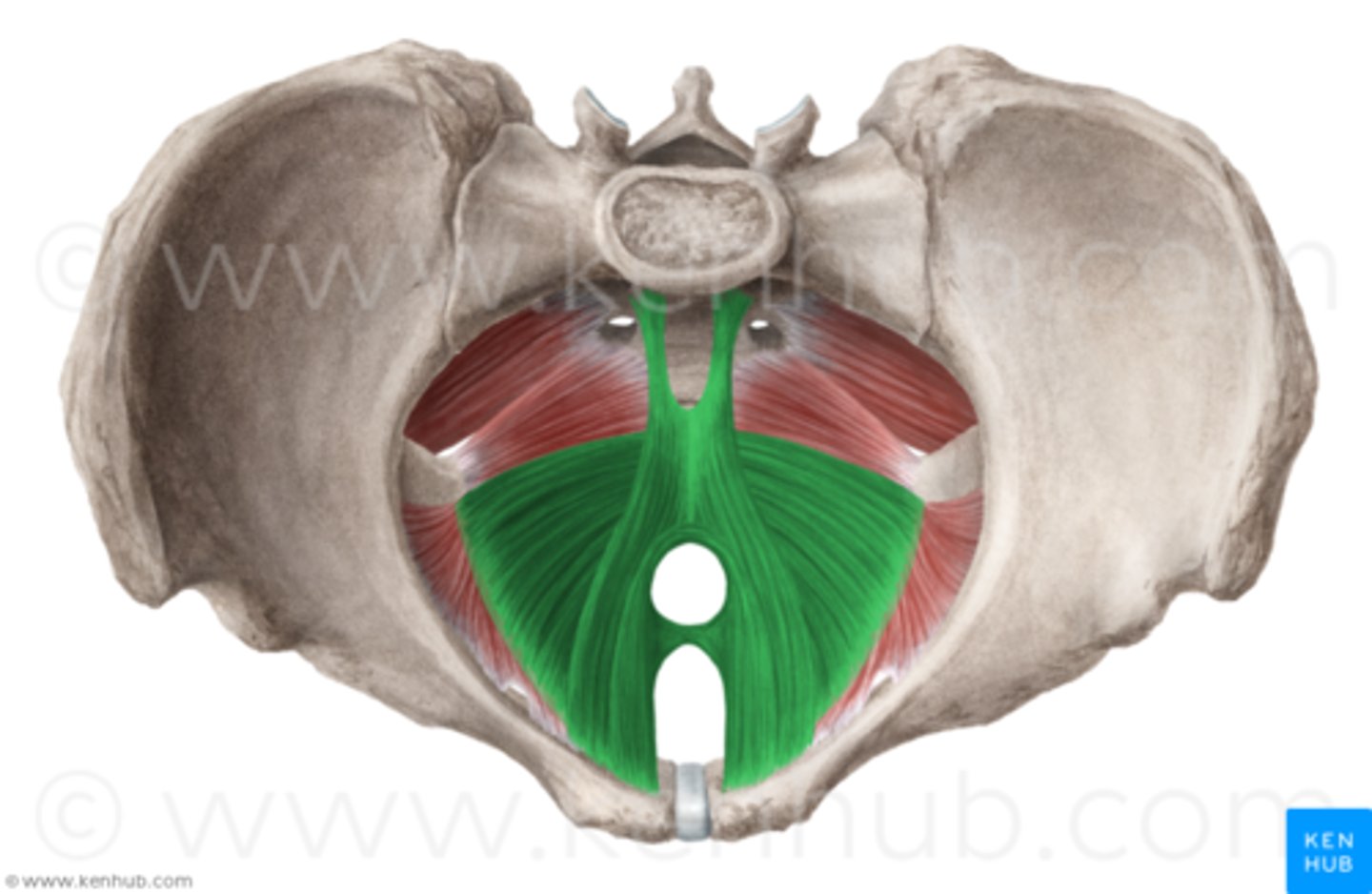
Diaphragm
L: Dome-shaped muscle between thoracic and abdominal cavities
A: Contraction expands the thoracic cavity causing inspiration

Deltoid
L: Top of shoulder
A: Too long to say
O: Clavicle and scapula
I: Deltoid tuberosity of humerus

Biceps brachii
L: Anterior arm
A: Flexes forearm (biceps curl with supine palm). Antagonistic to triceps brachii.
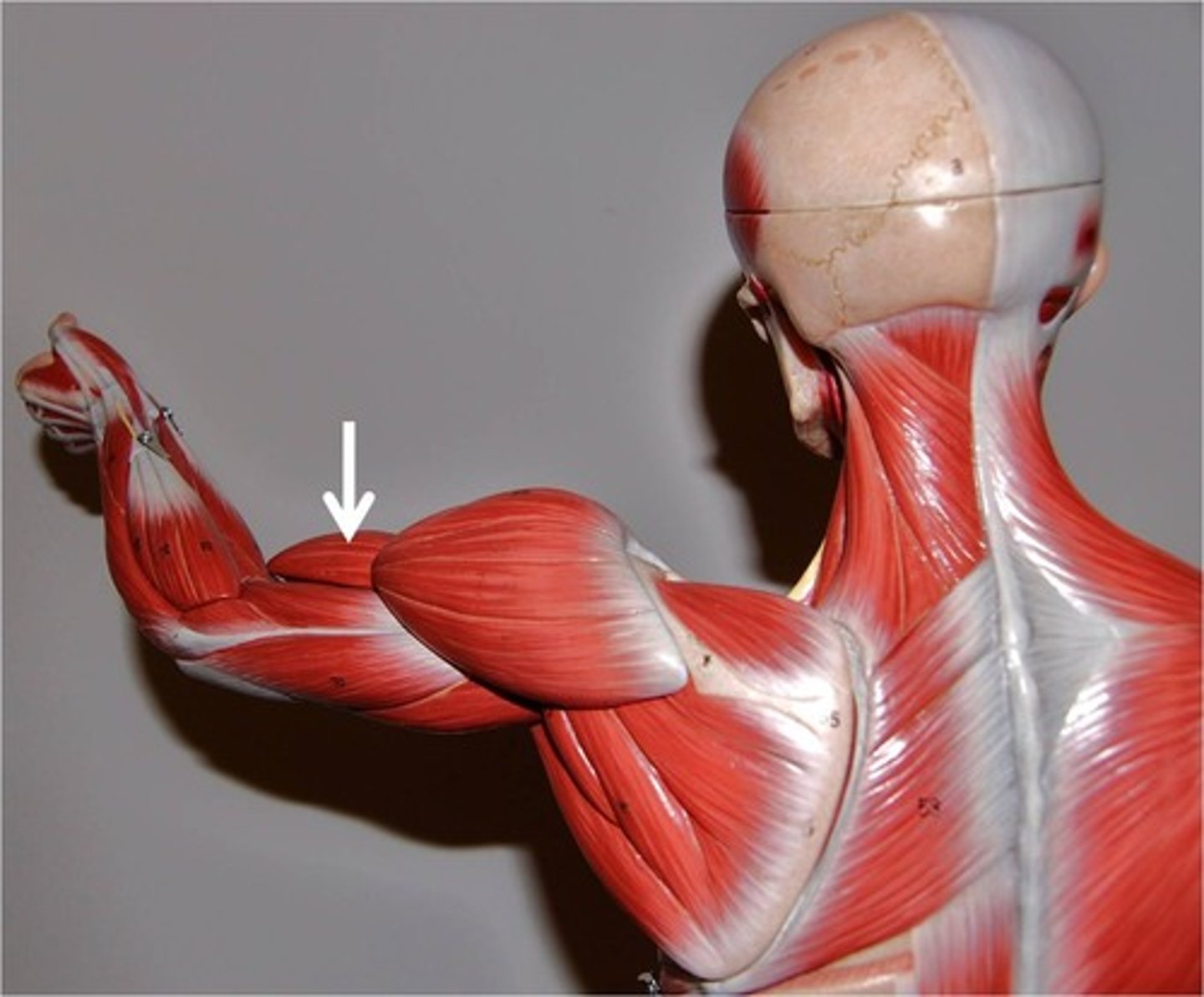
Triceps brachii
L: Posterior arm
A: Extends forearm . Antagonistic to biceps

Brachialis
L: Anterior arm, deep to biceps brachii
A: Prime flexor of arm (elbow flexion)

Brachioradialis
L: Anterolateral surface of foreman
A: flexes arm (elbow flexion)
O: distal, lateral humerus
I: Styloid process of radius bone
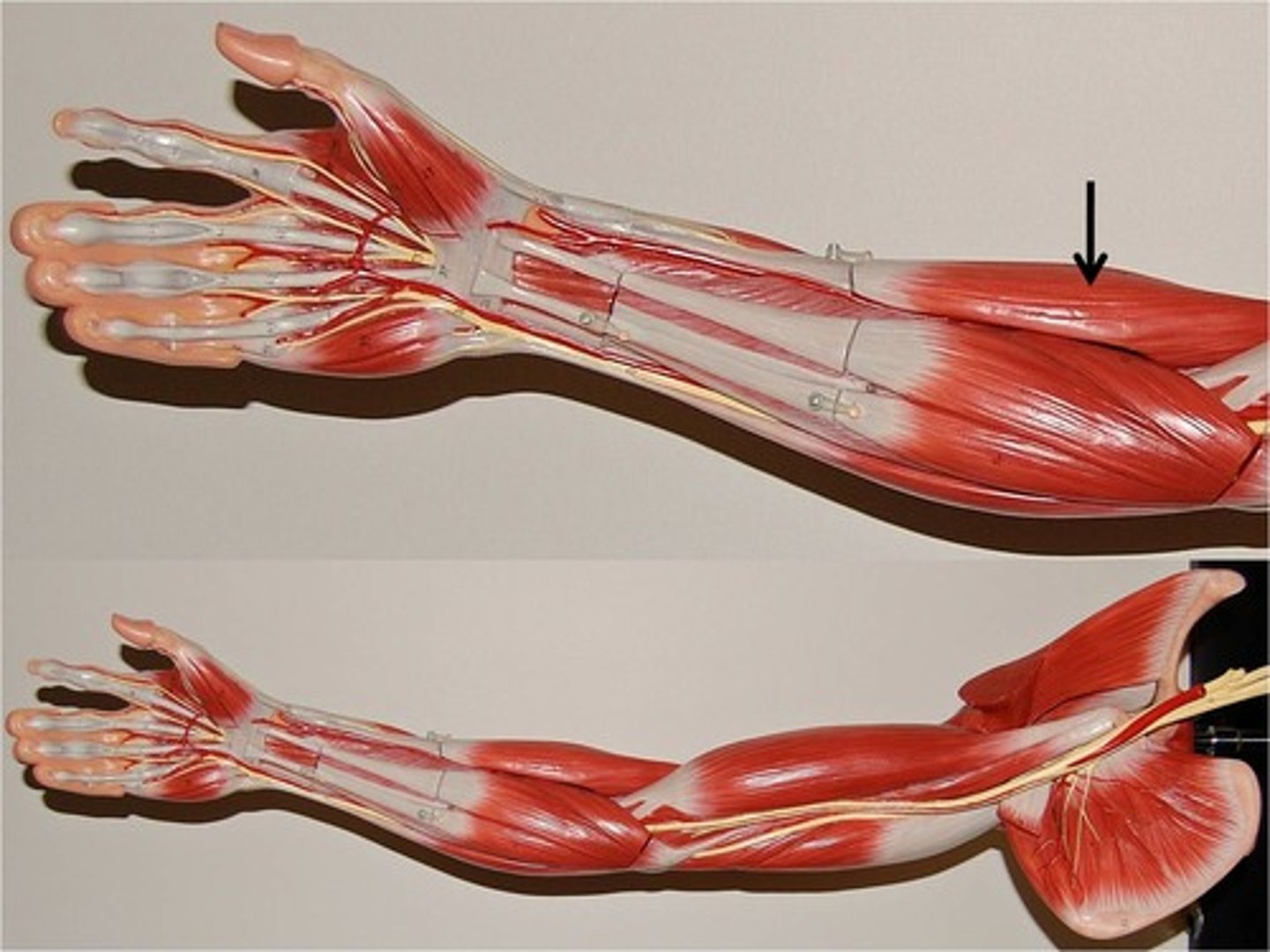
Pronator teres
L: Proximal, anterior surface of forearm.
A: Pronates palm, Antagonistic to supinator
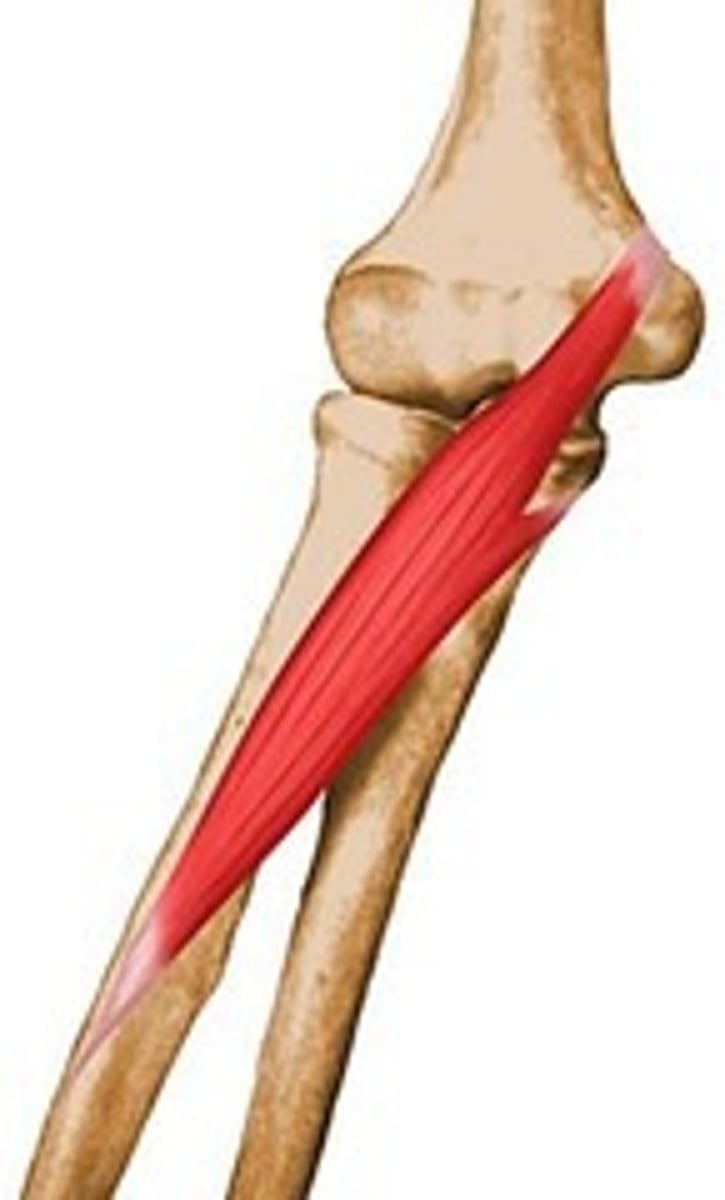
Flexor carpi radialis
L: Anterior forearm
A: Abduction; Antagonistic to extensor carpi muscles
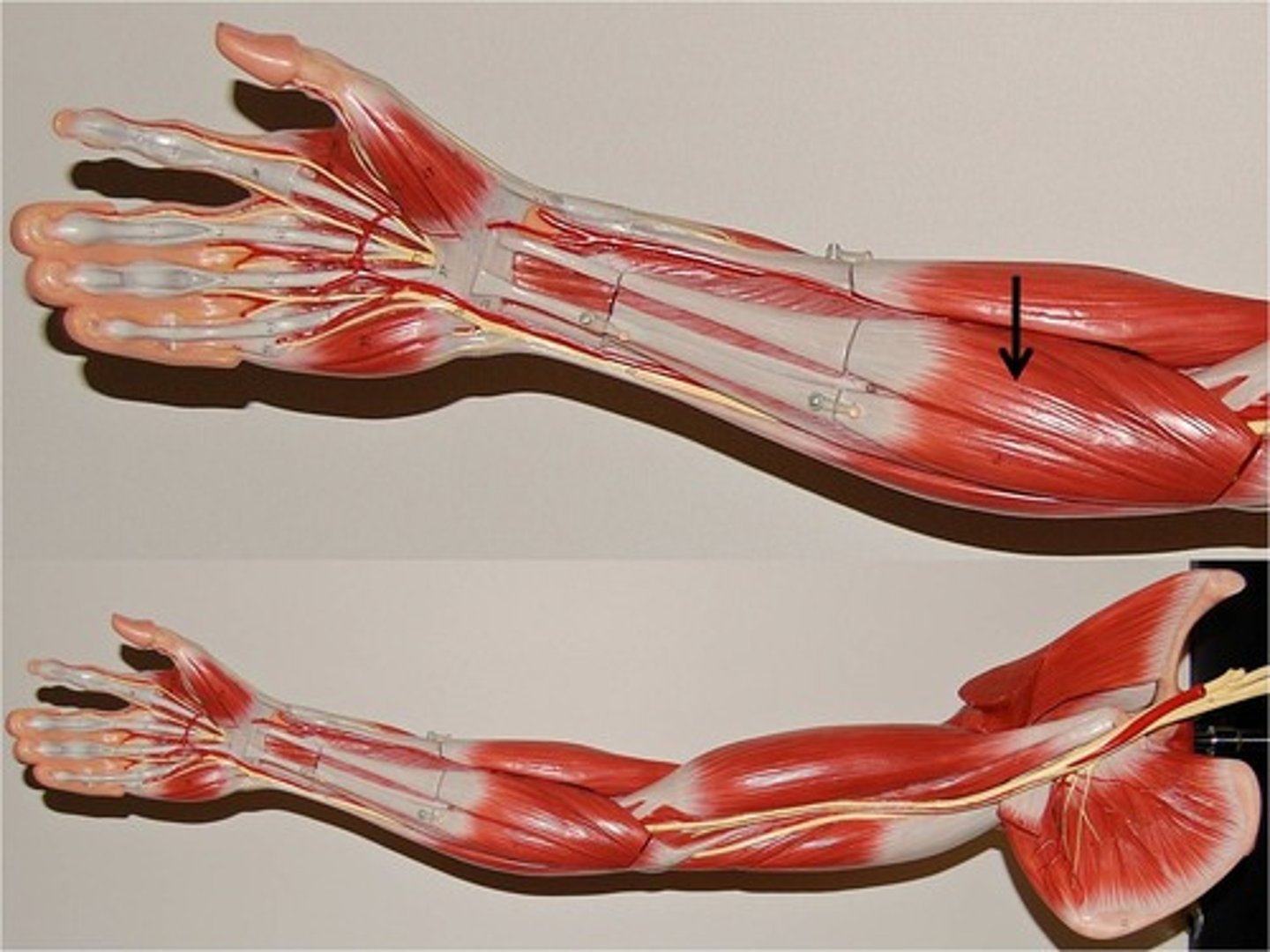
Flexor carpi ulnaris
L: Anterior forearm
A: Adduction; Antagonistic to extensor carpi muscles
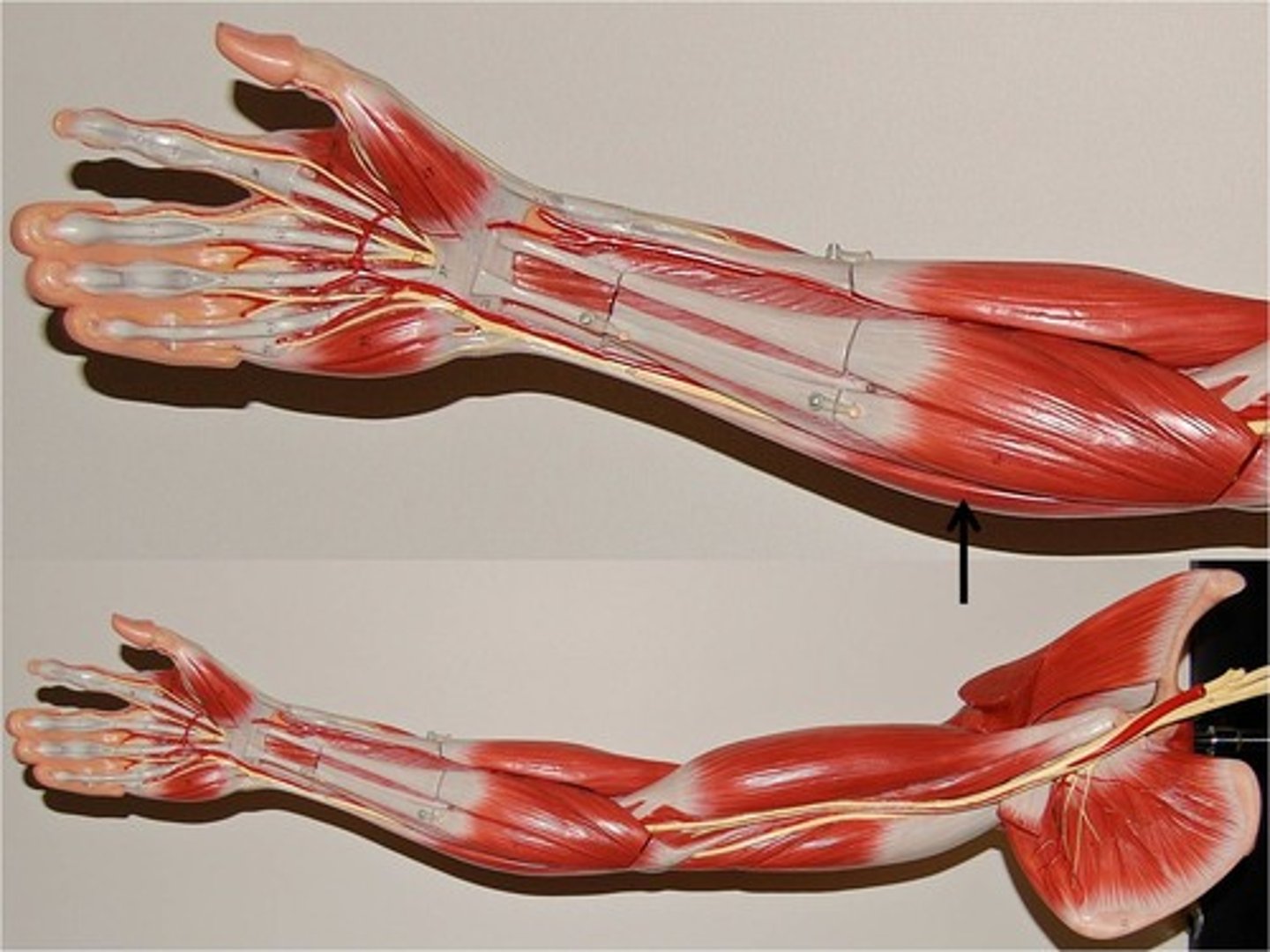
Extensor carpi radialis longus
L: Posterior forearm
A: Abducts the hand; Antagonistic to flexor carpi muscles.

Extensor carpi radialis brevis
L: Posterior forearm
A: Abducts the hand; Antagonistic to flexor carpi muscles.
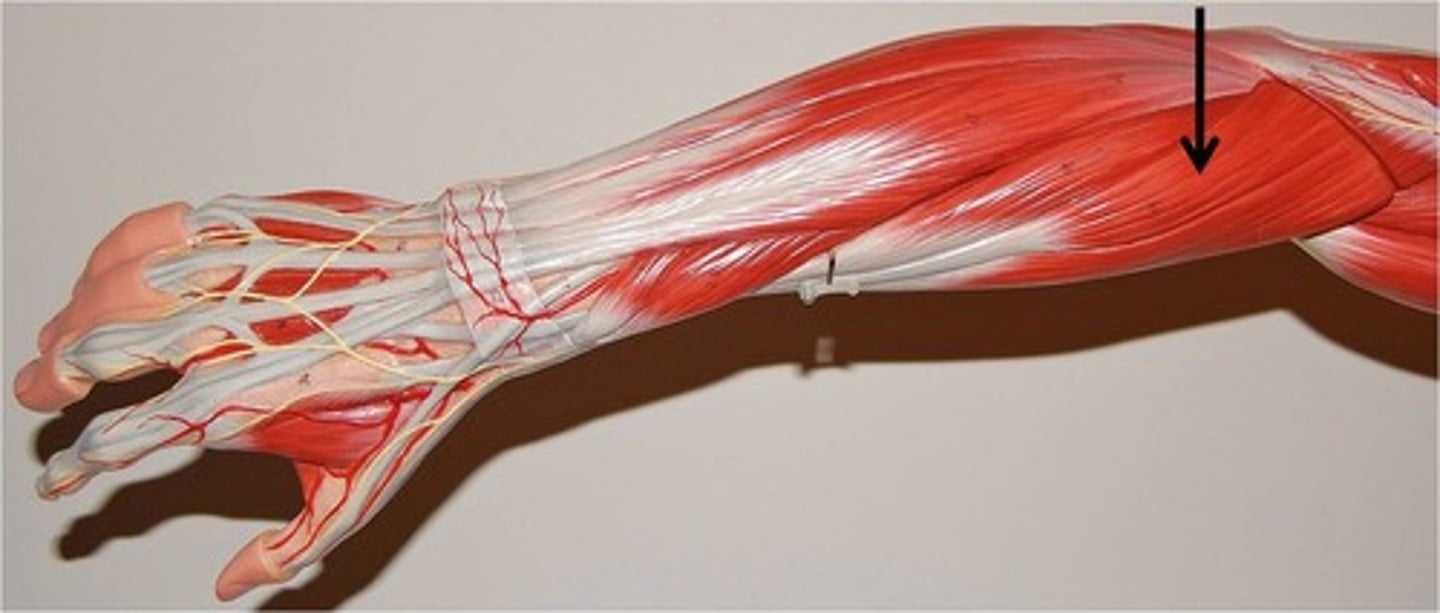
Extensor carpi ulnaris
L: Posterior forearm
A: Adducts the hand; Antagonistic to flexor carpi muscles.
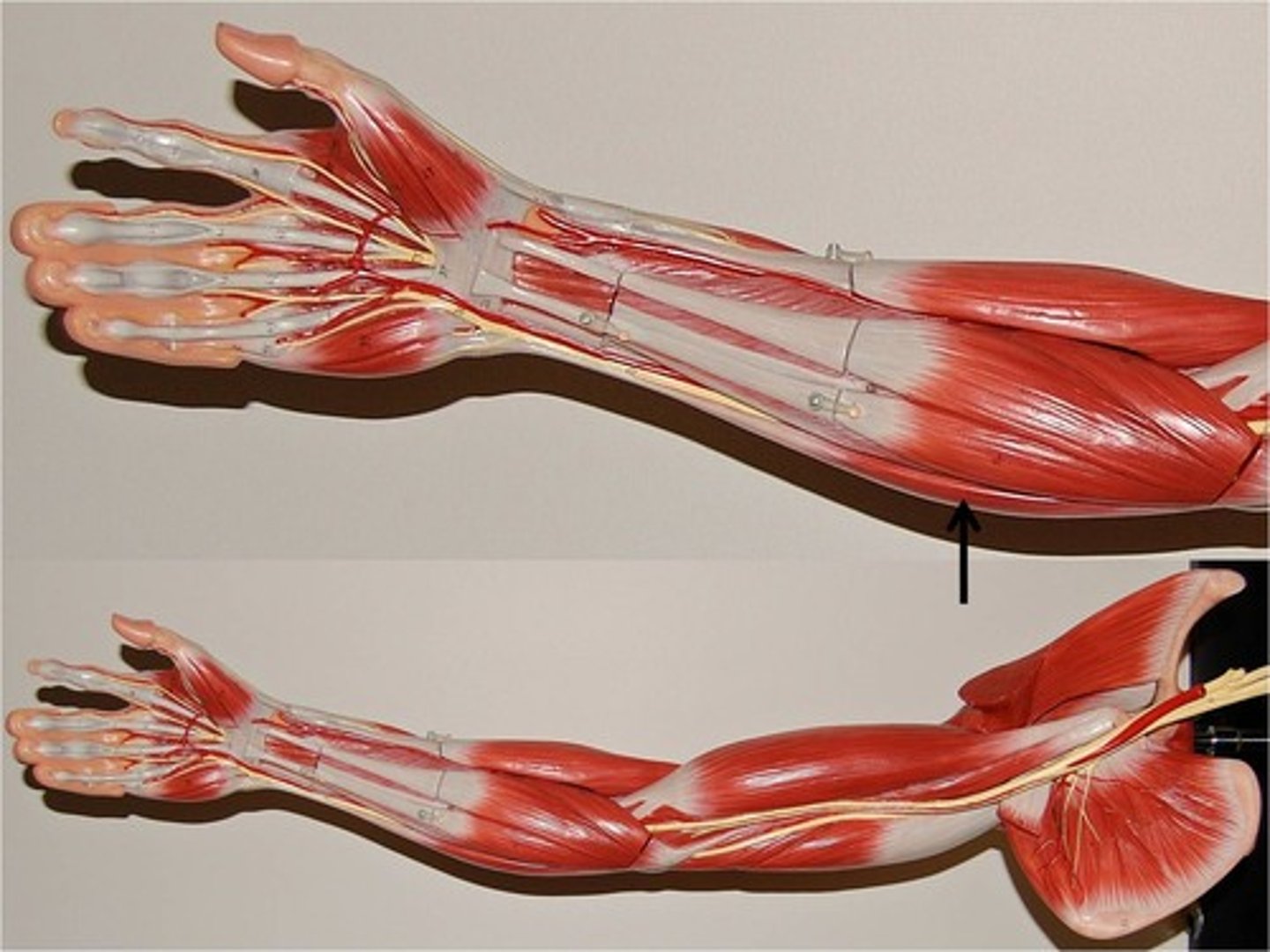
Flexor digitorum
L: Anterior forearm
A: Flexes fingers; Antagonist to extensor digitorum
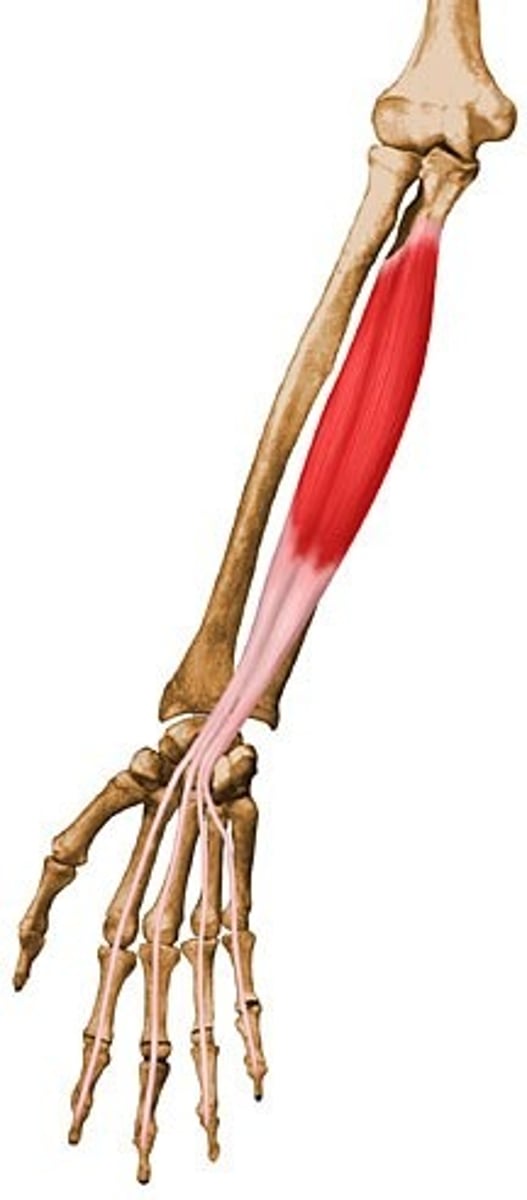
Extensor digitorum
L: Posterior forearm
A: Extend fingers; Antagonist to flexor digitorum
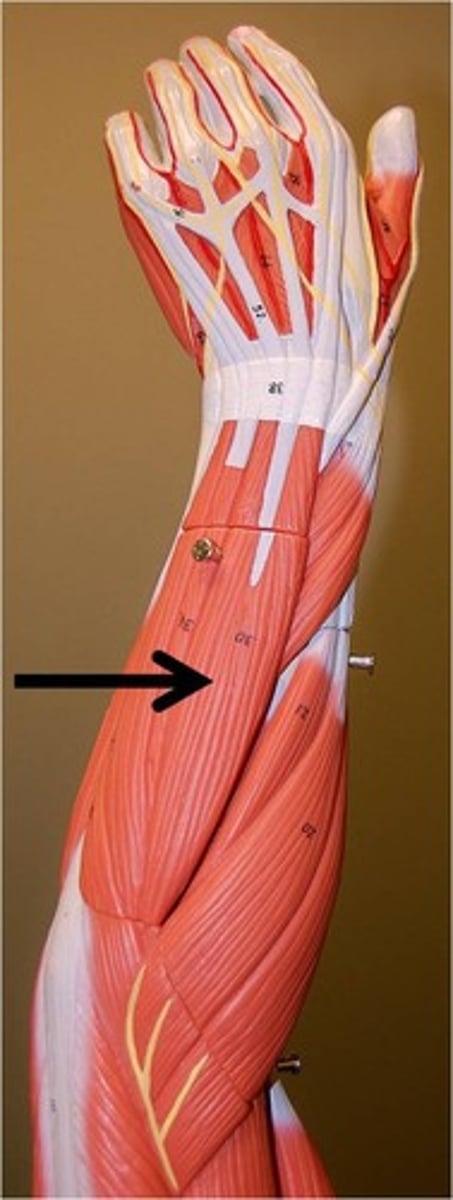
Gluteus maximus
L: Posterior leg muscle in gluteal region
A: Extends thigh; laterally rotates thigh
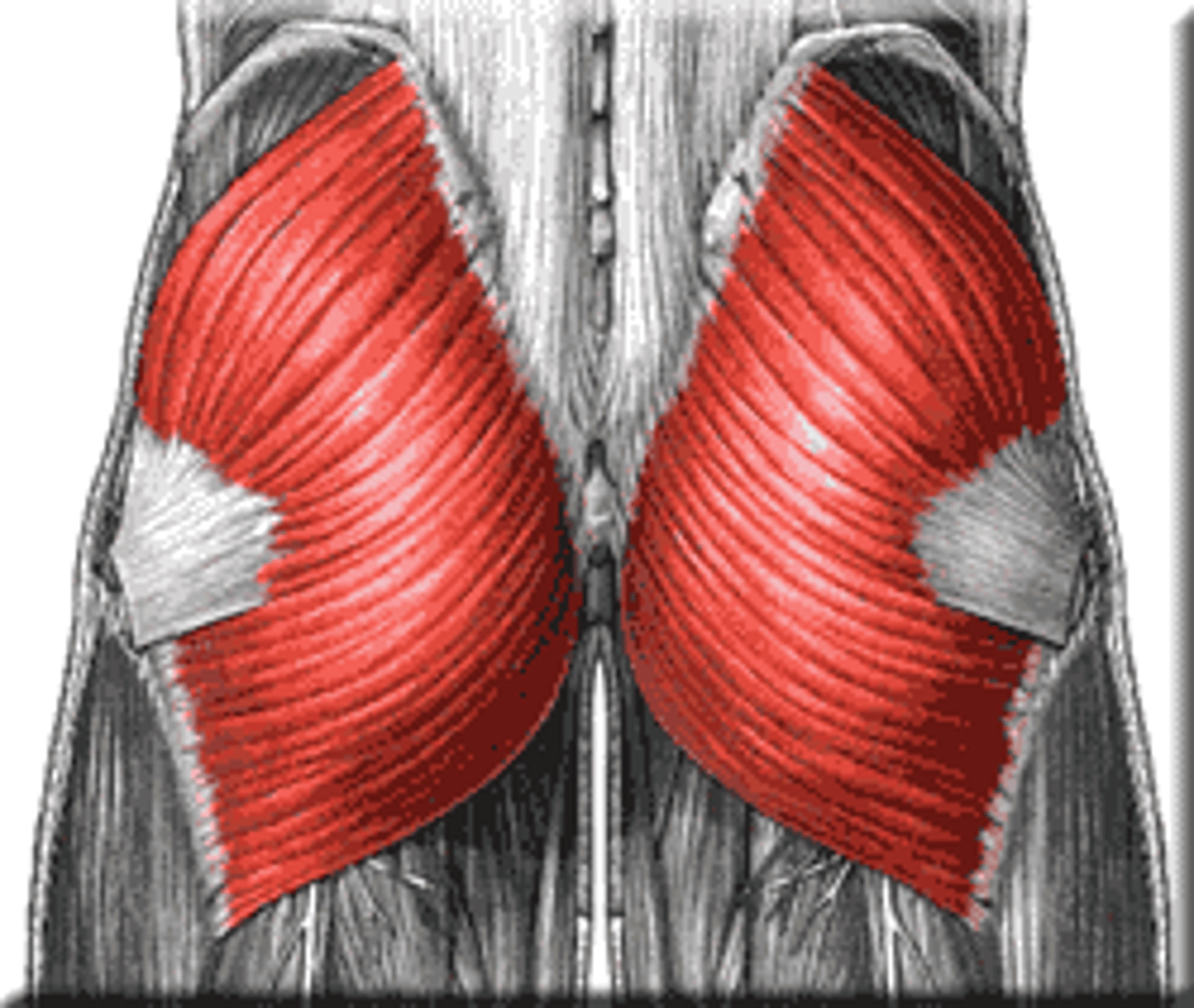
Gluteus medius
L: Upper thigh
A: Abducts thigh; medially rotates thigh
O: Lateral surface of ilium
I: Greater trochanter of femur
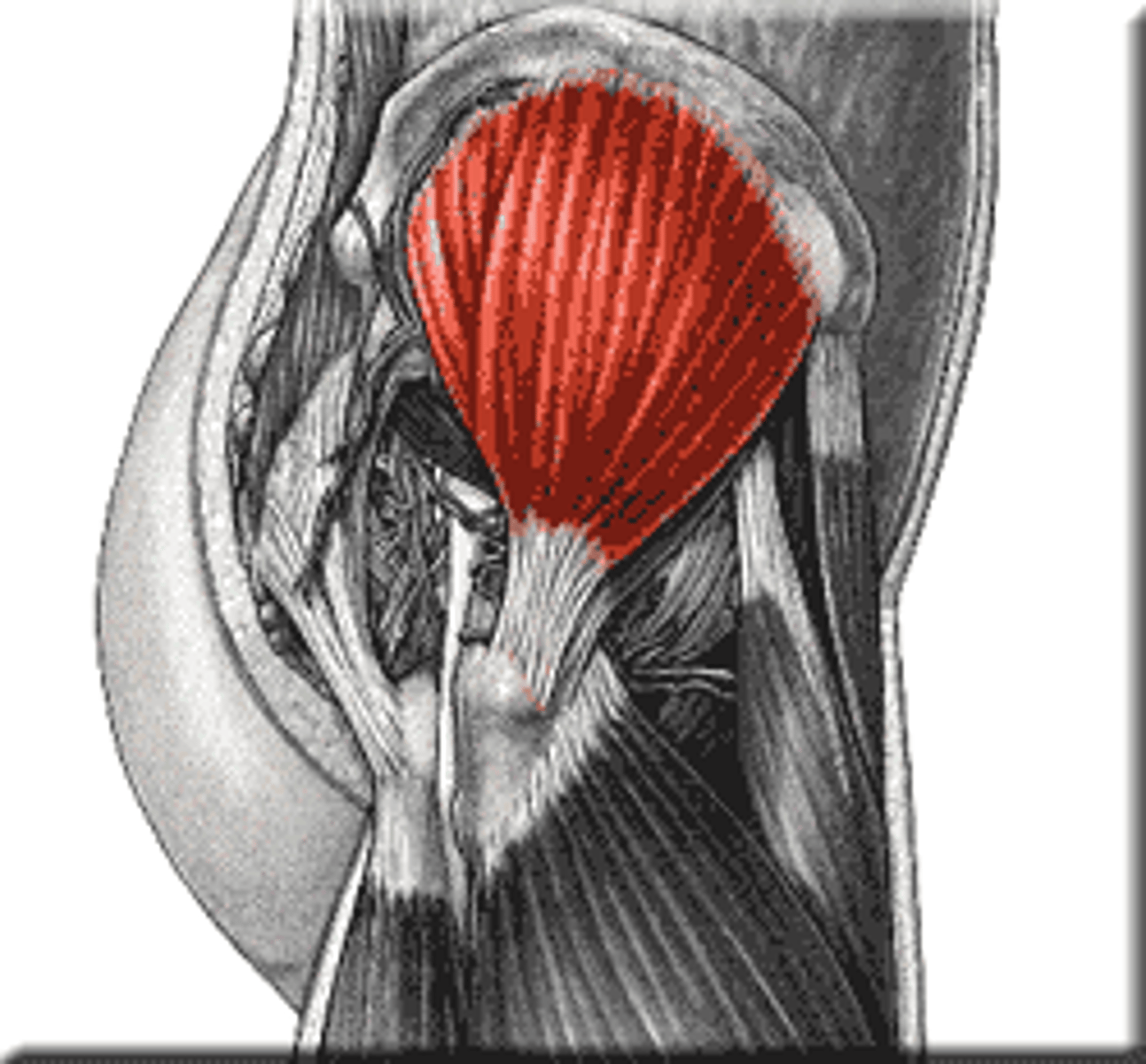
Gluteus minimus
L: Deep muscle under gluteus medius
A: Abducts thigh; medially rotates thigh; synergistic to gluteus medius.
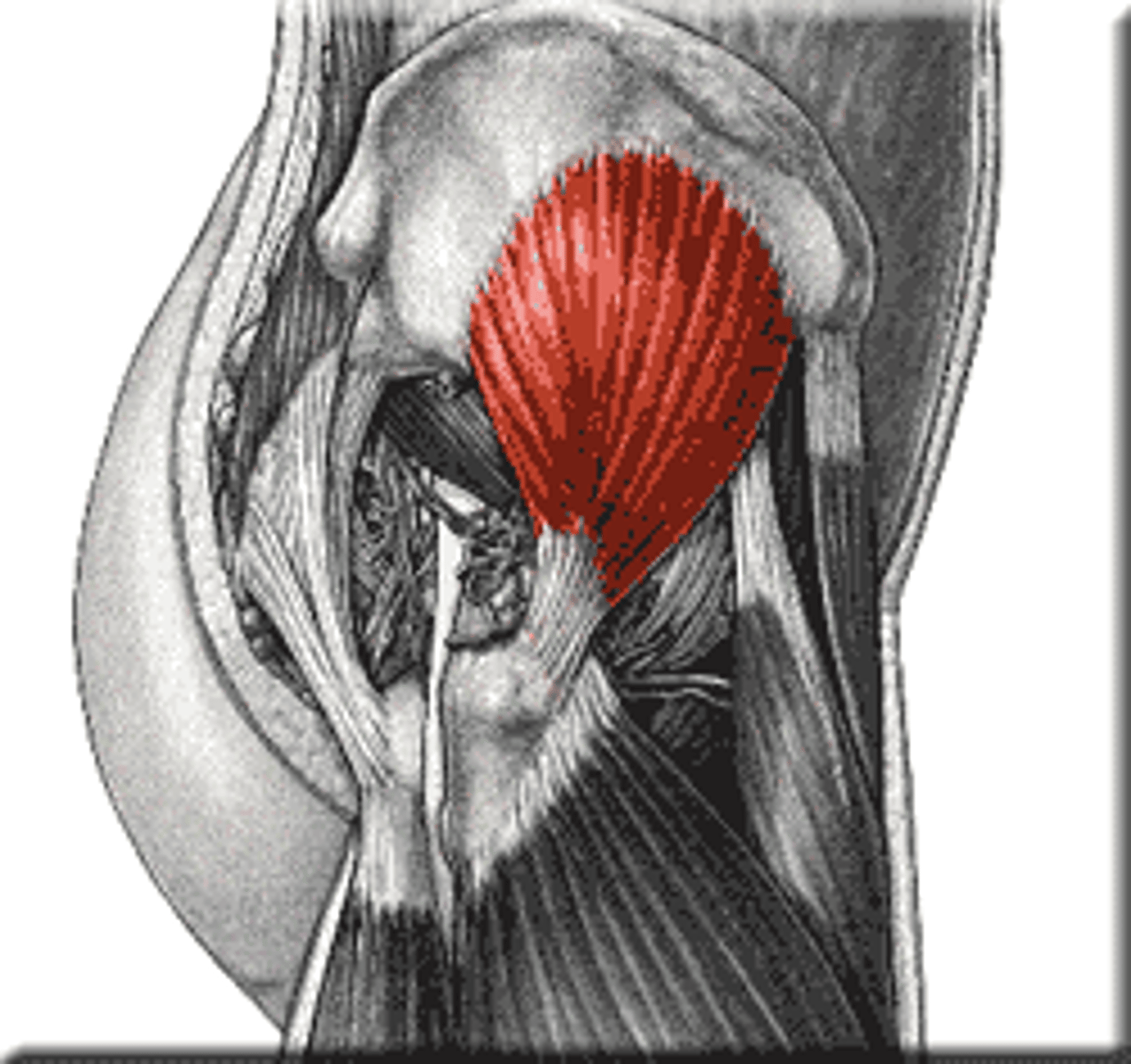
Rectus femoris
L: Middle, anterior thigh
A: Flexes thigh, extends leg (straightens knee)
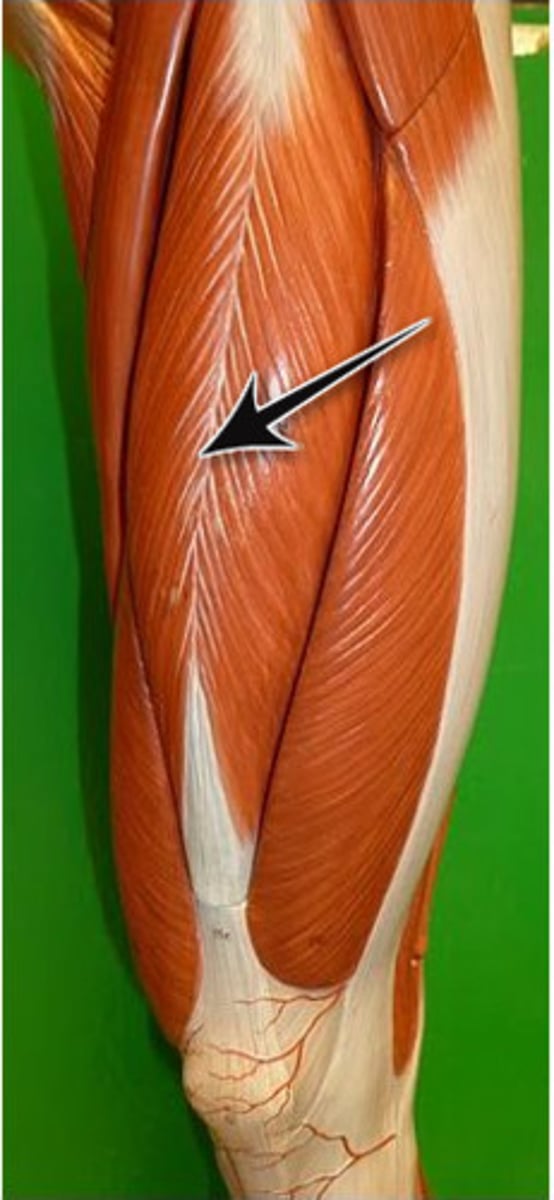
Vastus lateralis
L: Just above knee, lateral thigh
A: Extends leg; synergist with rectus femoris
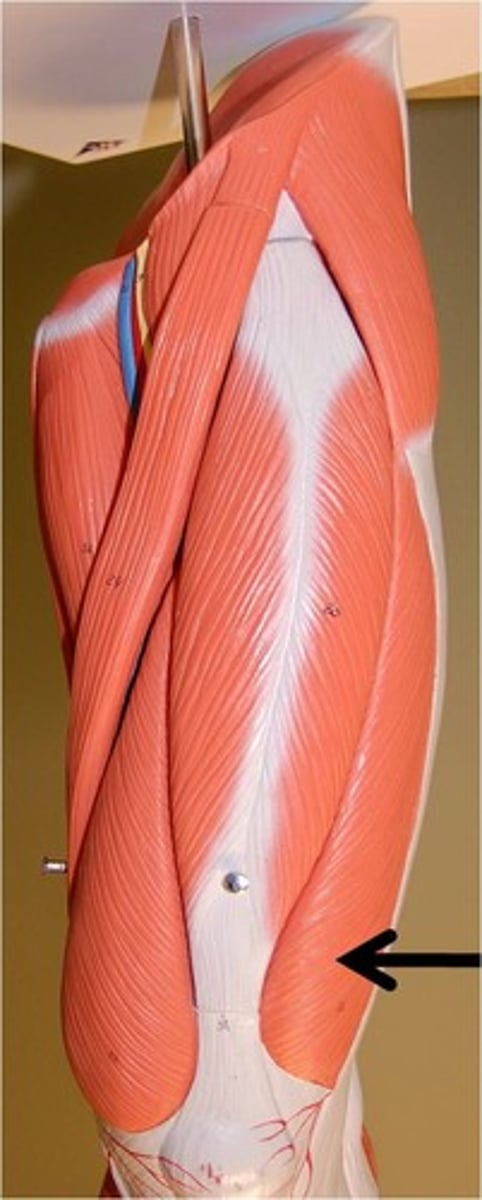
Vastus medialis
L: Just above knee, medial thigh
A: Extends leg; synergist with rectus femoris
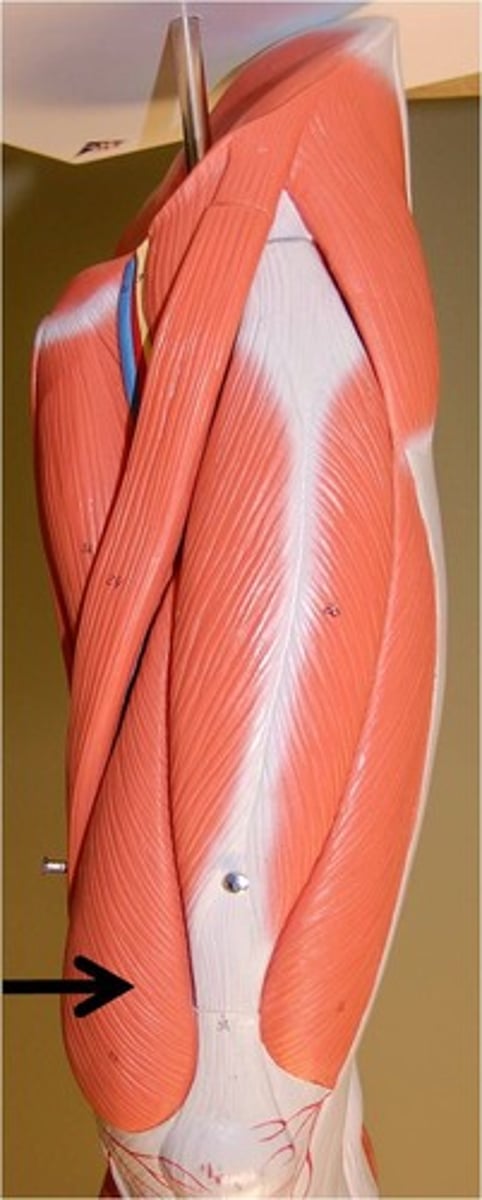
Vastus intermedius
L: Deep muscle, under rectus femoris
A: Works synergistically with the other quads to help extend leg.
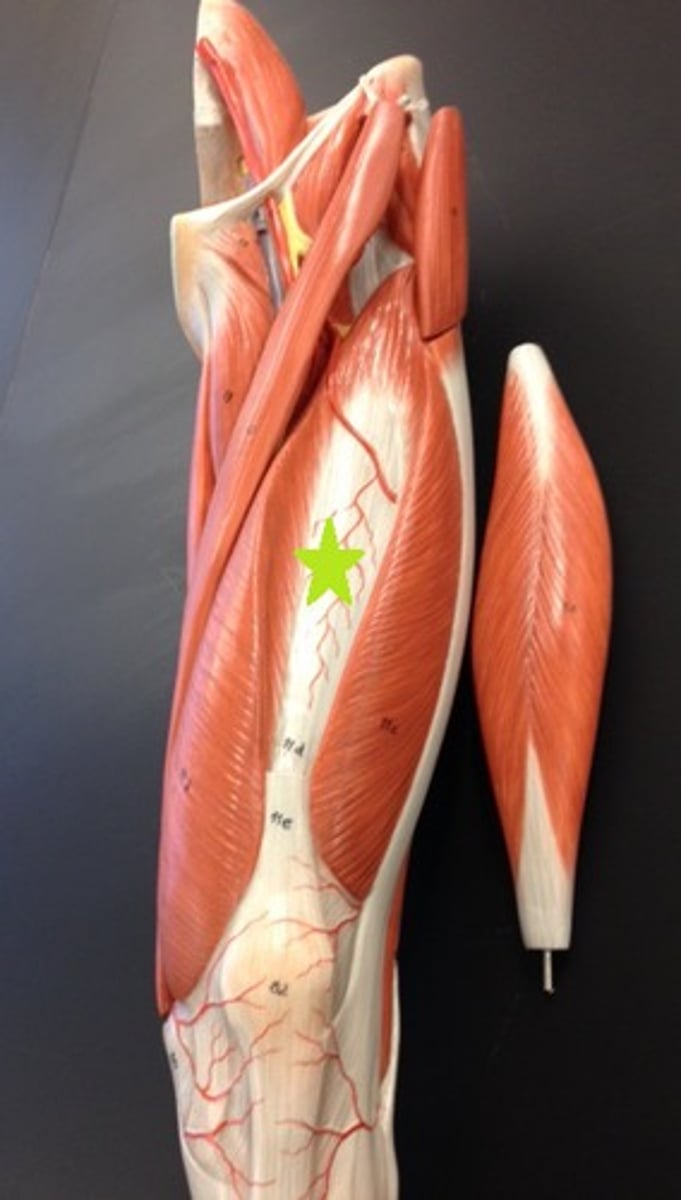
Biceps femoris
L: Posterior, lateral thigh
A: Flexes knee, extends hip and laterally rotates leg

Semitendinosus
L: Posterior, medial thigh
A: Flexes knee, extends hip and medially rotates leg
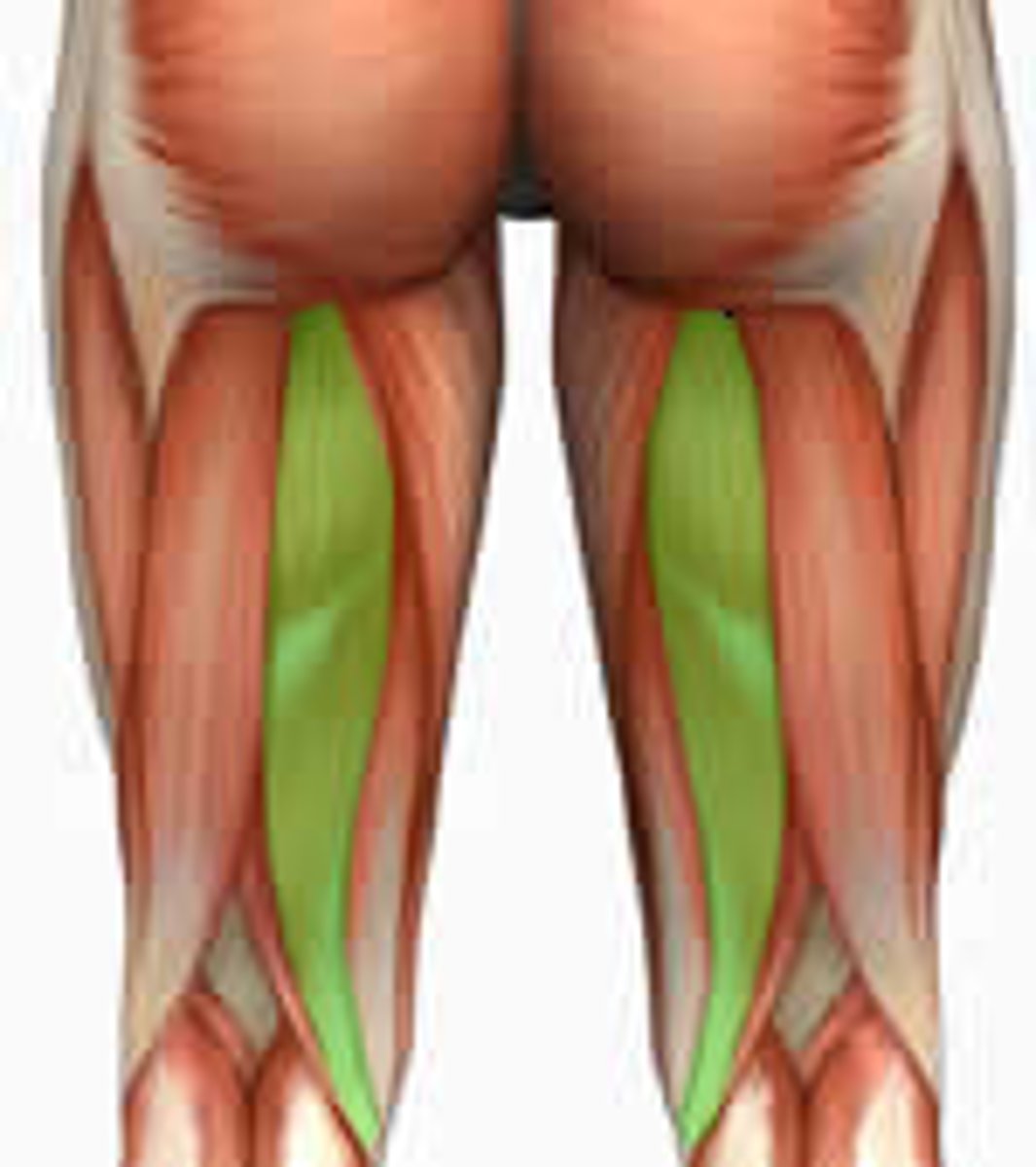
Semimembranosus
L: Deep muscle, under semitendinosus
A: Flexes knee, extends hip, medially rotates leg
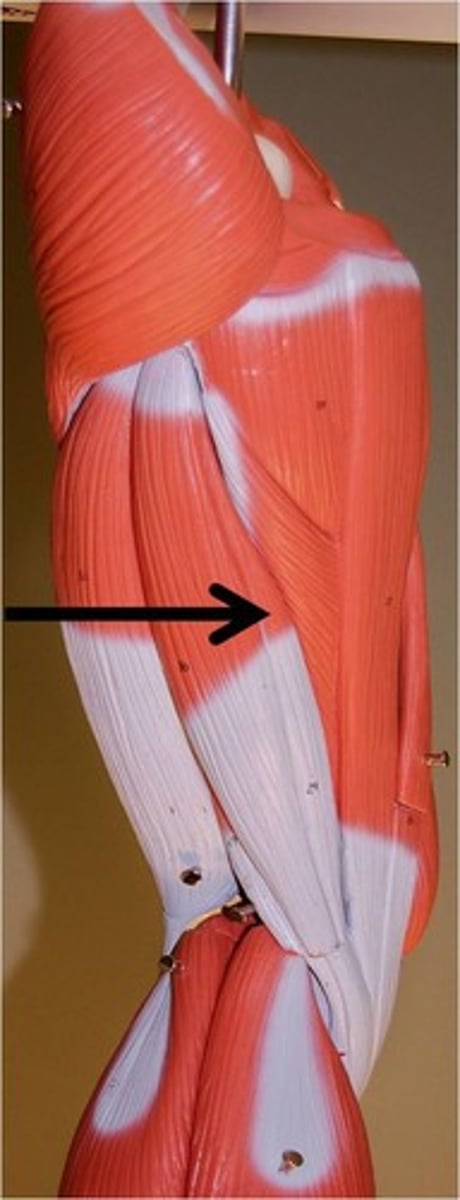
Tensor fasciae latae
L: Lateral hip (from the iliac crest to the fascia of thigh)
A: Abducts and medially rotates the thigh (elevates leg at 45 degree angle). Antagonistic to gracilis and adductors; synergistic to gluteus medius
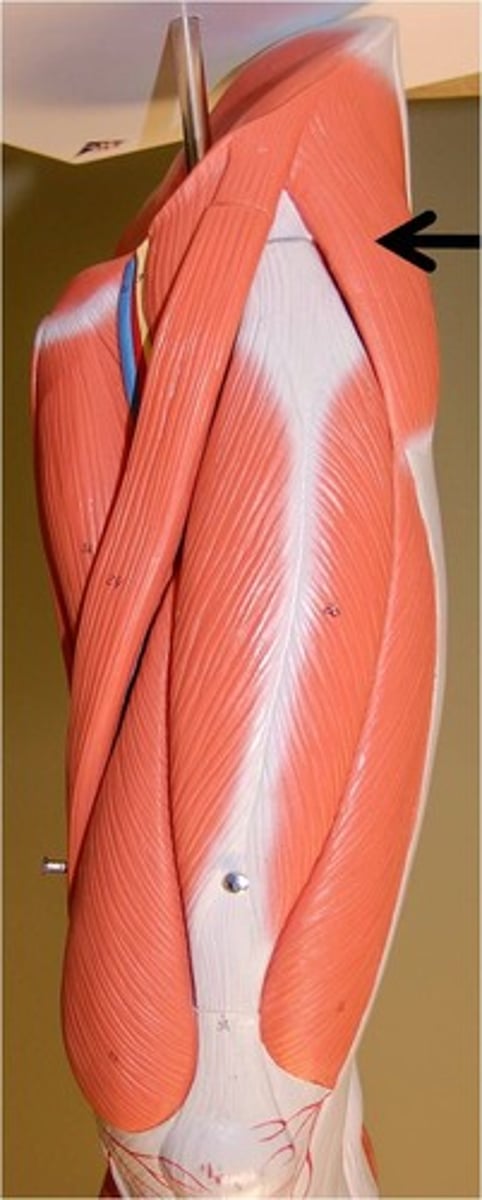
Sartorius
L: Strap-like muscle crossing the thigh
A: Flexes hip when lifting and everting knee (sit crisscross)
O: Anterior, superior iliac spine
I: Medial, proximal tibia

Adductors
L: Medial, anterior upper thigh
A: Adduct thigh (gripping with knees when riding horseback, "Thigh Master"). Synergistic to gracilis
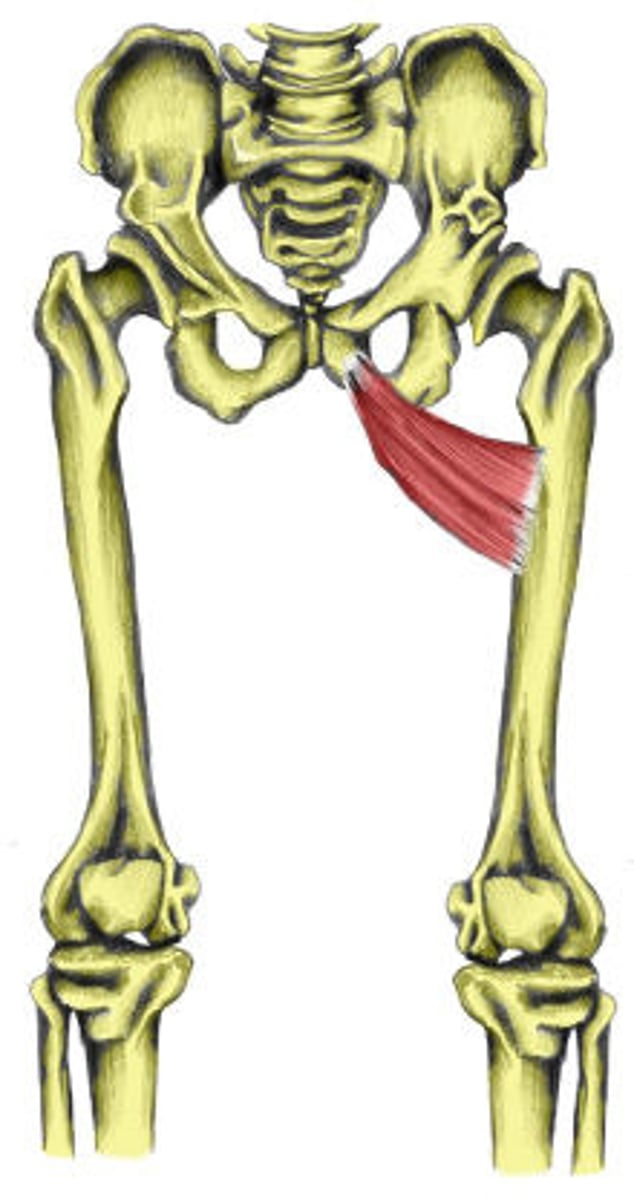
Gracilis
L: Medial most thigh muscle, (pubic bone to medial proximal tibia)
A: Adducts and flexes thih, flexes leg. Antahonistic to tensor fasciae latae; synergistic to adductors
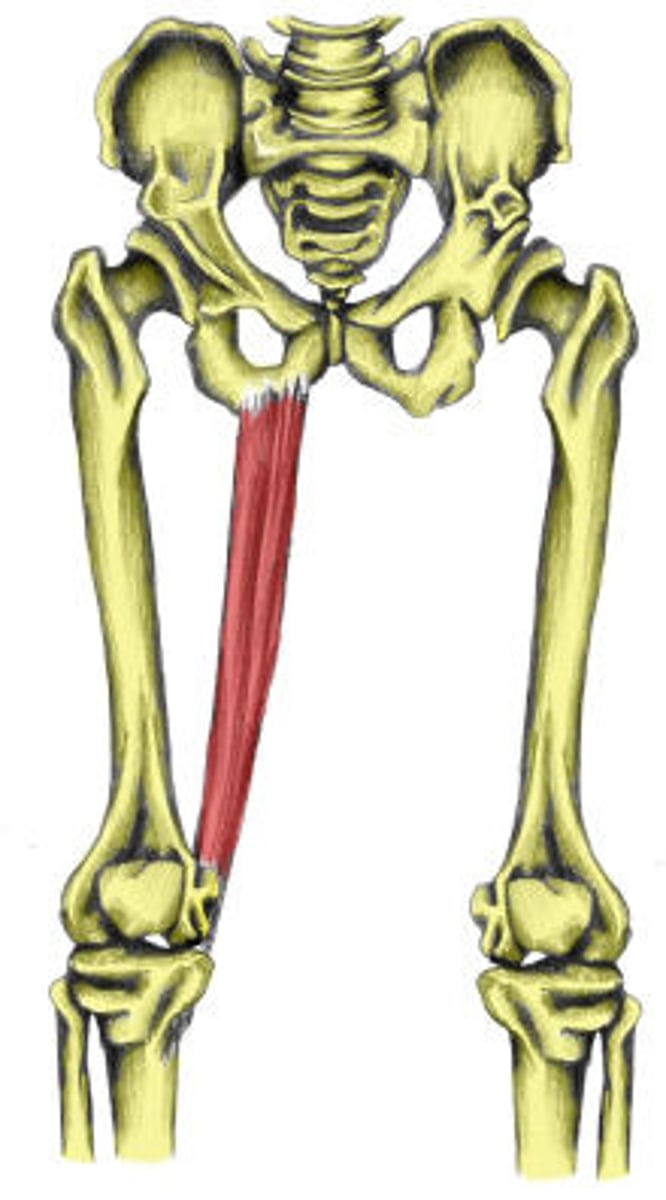
Gastrocnemius
L: Posterior aspect of leg
A: Flexes leg; plantar flexion (agonist)
O: Distal femur
I: Calcaneus via canaeal (Achilies) tendon
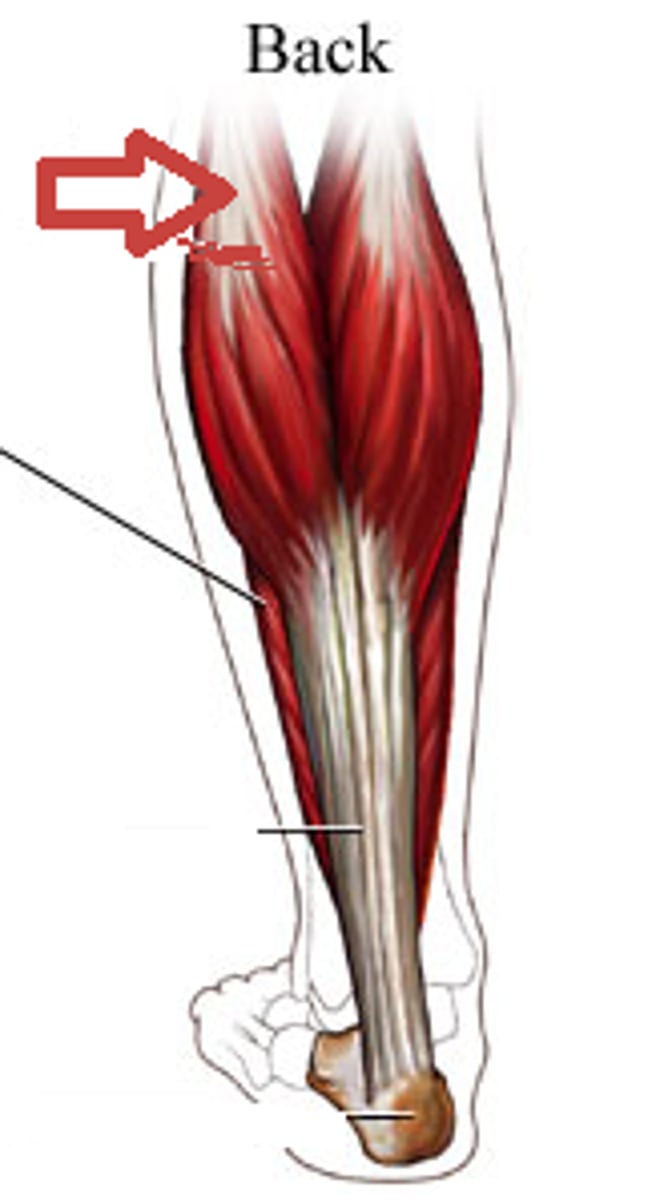
Tibialis anterior
L: Anterior, lateral lower leg (fills gap between tibia & fibula)
A: Flexes ankle (dorisflexion). Antagonistic to gastrocnemius

Fibularis longus
L: Lateral aspect of leg, overlies fibula
A: Eversion of the sole of the foot, also aids plantar flexion. Antagonistic to tibialis anterior (inversion and eversion and dorsi and plantar flexion), synergistic with soleus (plantar flexion)
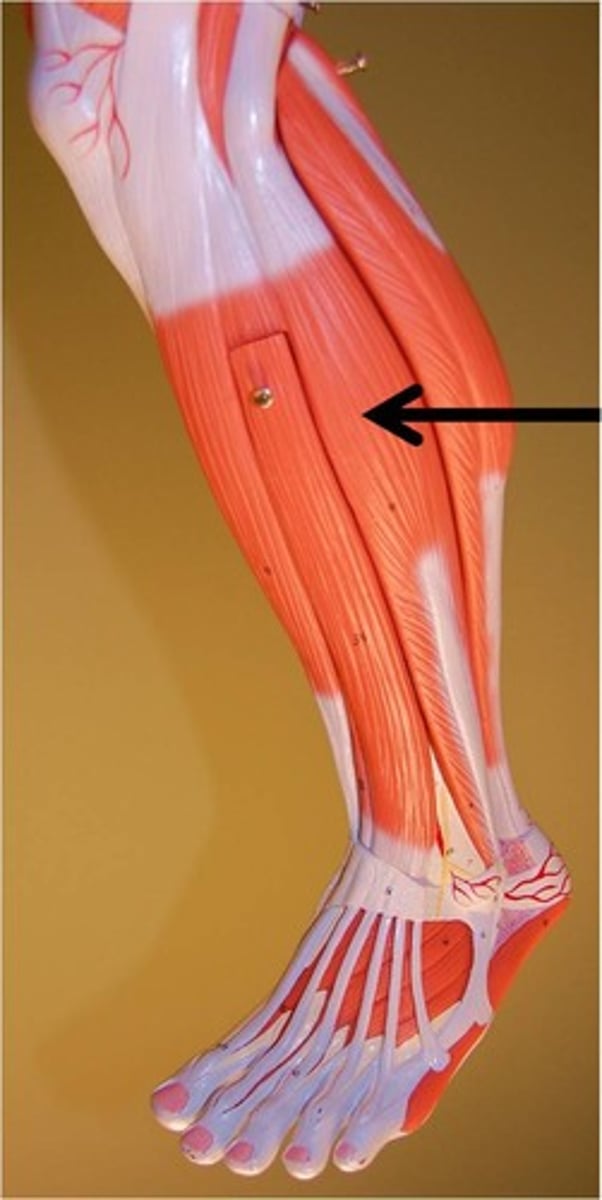
Soleus
L: Deep muscle to the body of gastrocnemius
A: Plantar flexion. Synergist to gastrocnemius and fibularis longus.
